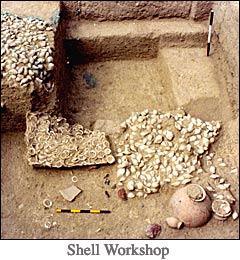Numbers and numerals form an important, even a vital, part of life. This point is too elementary to waste time here in elaborating why it is so. The fact is that India occupies a unique place in the whole world in the field of numbers and numerals, and the purpose of this article is to place these unique features on record:
A. The Concept of Numbers.
B. The Written Numeral System.
C. Indo-Aryan Numbers.
A. THE CONCEPT OF NUMBERS
The very idea of numbers is something which seems very natural to us. But is it really so? Incredible though it may appear to us, there are some very primitive or simple languages in the world which do not even have concepts or names for numbers up to ten (the number of fingers on a human pair of hands, which would seem to be the natural base for counting). This is mainly so among the Australian aboriginal languages. The following examples of some Australian aboriginal language numbers will make this clear:
Nunggubugu:
1. anyabugij.
2. wulawa.
3. wulanybaj.
4. wulal wulal.
There are no number words beyond four.
Kamilaroi:
1. mal.
2. bular.
3. guliba.
4. bular bular.
5. bular guliba.
6. guliba guliba.
There are specific number words for numbers up to three, and the same words are combined to produce numbers from four to six, at least.
Gumulga:
1. urapon.
2. ukasar.
3. ukasar urapon.
4. ukasar ukasar.
5. ukasar ukasar urapon.
6. ukasar ukasar ukasar.
This language has specific number words for one and two, and these are combined to produce numbers from three to six.
A related language Mabuiag has similar words from one to six:
1. urapun.
2. okosa.
3. okosa urapun.
4. okosa okosa.
5. okosa okosa urapun.
6. okosa okosa okosa.
And then there is a number word for seven and any other number after 7:
7 or 7+. ras.
There are apparently a few rare languages in the extreme isolated portions of areas within Papua-New Guinea, interior Africa and Patagonia (the southern half of South America) which have similar structures in which the numbers do not go beyond six or ten and are based on words from one to three.
But India represents the world in microcosm: here we have the simplest and most primitive number system in the world even as late as the twentieth-twenty-first century CE, as well as the most developed and elaborate number system in the world even as early as during the Vedic period (extending back beyond 3000 BCE, or, even as per the now discredited AIT version of Vedic history, to 1200 BCE).
The simplest and most primitive number system in the world (the word "primitive", it must be emphasized here, is not a deprecatory word) is found in the Andaman islands in India. Formerly (as per older colonial records, and I have myself quoted them in an earlier article) it was believed in fact that the Andamanese languages had numbers only for one and two. However, it appears this is not so.
The following are the number words in the Aka-bea-da (Greater Andamanese) language, which only has words from one to five:
1: obatul.
2: ikpaurda.
3: edarobai.
4: eijipagi.
5: arduru.
But an even simpler and more primitive form of number system, the simplest and most primitive form in the world, is found in the Onge language, which has numbers only from one to three, and any number above that is represented by a word ilake which does not mean "four" but specifically means "many":
1: yuwaiya.
2: inaga.
3: irejidda.
On the other hand, as early as the Vedic Samhitas, we had words in India for very high numbers. The Yajurveda, for example, in the course of a hymn (Yaj.17.2), casually lists the following words for numbers from ten (101 or 10) to one trillion (1012 or 1,000,000,000,000):
101: daśa.
102: śata.
103: sahasra.
104: ayuta.
105: niyuta.
106: prayuta.
107: arbuda.
108: nyarbuda.
109: samudra.
1010: madhya.
1011: anta.
1012: parārdha.
It is obvious that while, for ritual purposes, the enumeration in this hymn stops at 1012, logically there is clearly an understanding of the infinite nature of this mathematical series and of the idea that these are just the first steps in an infinite series of numbers each being a multiple of the previous number by ten. This becomes apparent from countless references and number words in the ancient Vedic and Sanskrit texts, but most particularly in certain texts which play with mathematical ideas. For example, the Lalitavistara, a Buddhist text, actually describes an even more elaborate system (where some of the above words from the Yajurveda are now replaced by other words, and all the names are given in multiples of hundred. Here in fact some of the above words, likeayuta and niyuta, are given higher values):
103: sahasra.
105: lakṣa.
107: koṭi.
109: ayuta.
1011: niyuta.
1013: kaṅkara.
1015: vivara.
1017: akṣobhya.
1019: vivāha.
1021: utsāṅga.
1023: bahula.
1025: nāgabala.
1027: tiṭilambha.
1029: vyavasthānaprajñāpti.
1031: hetuhila.
1033: karaphū.
1035: hetvindriya.
1037: samāptalambha.
1039: gaṇanāgati.
1041: niravadya.
1043: mudrābala.
1045: sarvabala.
1047: visaṁjñāgati.
1049: sarvasaṁjña.
1051: vibhūtaṅgamā.
1053. tallakṣaṇa.
The text does not stop there: it points out that this is just the first of a series of nine counting systems that can be expanded geometrically, and then goes on to mention the names of the culmination points of each of the nine systems(starting with the number 1053 above, as tallakṣaṇa, dhvajāgravatī, dhvajāgraniśāmaṇī, vāhanaprajñapti, iṅgā, kuruṭu, kuruṭāvi, sarvanikṣepa and agrasārā), culminating in a large number, 10421, or one followed by 421 zeroes!This text, and many other Sanskrit texts, go even further in indulging in flights of fantasy involving even higher numbers. The point is not whether such incredibly high numbers could possibly serve any practical purpose: obviously they could not! The point is that the ancient Indian theoretical concept of numbers had a vision which was limitless.
India therefore occupies a unique position in the world: on the one hand, it haseven in the twenty-first century the Onge language with no number words of its own beyond three (i.e. the simplest number system in the world), and on the other, it had even in ancient times:
a) number words for numbers as high as 1053, and, in theory, even as high as10421, and in further theory, going into unimaginably and fantastically high numbers beyond even that;
b) the concepts of zero, finite numbers and infinity (and, in Jain texts, even different categories of what are now called transfinite numbers);
c) the concept of fractions (found even in the Rigveda, in the Puruṣa sūkta, Rig.X.90.3,4);
d) the concept of negative numbers.
[All this is apart from the highly developed state of almost every branch of Mathematics in ancient India].
B. THE WRITTEN NUMERAL SYSTEM
Numbers (at least till three) are found in every language in the world. A written numeral system is something different from the mere concept of numbers. The numeral system used all over the world today is the system invented in India. In popular parlance, this is often described as follows: "India invented/contributed the zero". But this is an extremely haphazard statement, at least when it comes to the importance of India in the history of numerals: the zero was also (at much later dates) independently invented in ancient Mesopotamia and Mexico (the Mayans). Also, it is quite a silly way of putting it. It sounds like some old-time fable: all the ancient civilizations of the Old World got together and decided "let us invent/contribute numbers". China announced that it was contributing the numbers one, four and six. Egypt announced it was contributing two, three and nine. Mesopotamia announced it was contributingfive, seven and eight. India, a little slow off the mark, was left with nothing to contribute. Then, the Indian representative had a brilliant idea: he immediately invented the zero, and announced "we contribute zero"!
The fact is, zero is just one essential part of the whole of the present daydecimal numeral system which is used all over the world and which was invented/contributed by India and which is also the basis for the binary system which is used in computers (with a change of base from ten to two) . Numeral systems were independently invented by every highly developed civilization in the world: Egypt, Mesopotamia, China, Mexico and India. Most of the other civilizations of West Asia and Mediterranean Europe derived or developed their own numeral systems based on the Egyptian system. The numeral system of each civilization provides an indication of the stage of development of mathematical logic in each civilization, as we will see, and the Indian system represents the highest stage of development: the Egyptian system represents the first systematic stage of development, the Chinese system represents thesecond systematic stage of development, and the Indian system represents the third and final systematic stage of development.
The very idea of numbers contains the first seeds of any numeral system. We can imagine different societies from the most primitive times which had numbers (at least up to three in the simplest and most primitive system) but did not have any method of recording numbers in the form of a written numeral system.
The first primitive stage of recording numbers must have started in a pictorial form. In a primitive society, a man possessing, for example, 12 cows and 5 sheep thought of recording the fact by drawing 12 pictures of a cow and 5 pictures of a sheep. The very concept of representing numbers in writing (albeit pictorial) is the characteristic of this first stage.
In the second primitive stage, as society became larger and more complicated, the concept of numbers must have evolved from the concrete to the abstract. Thus, finding it tiresome to draw 12 pictures of a cow and 5 pictures of a sheep, the man in a society at a more developed stage conceived the idea of representing each unit by an abstract picture (most logically a simple vertical or horizontal line): thus 12 lines followed by the picture of a cow, and 5 lines followed by the picture of a sheep. The concept of abstract numbers, as opposed to numbers as an intrinsic aspect of some concrete material unit, is the characteristic of this second stage.
In the third primitive stage, as the number of units became much larger and more cumbersome, it would be tiresome to keep track of the number of individual pictures. Draw a series of 152 vertical lines in a row and try to count them again, to see how clumsy it would be and how susceptible to counting errors! This must have led to the evolution of numbers from the individual unit to the collective unit. This can be seen even today in a system of keeping scores which is still quite commonly used: after four vertical strokes to indicate four scores, the fifth stroke is a horizontal stroke drawn across the earlier four strokes, indicating five or a full hand. After that the sixth score is recorded by another vertical stroke at a little distance from the first hand. The concept of an abstract unit consisting of a collection of a certain fixed number of individual abstract units is the characteristic of this third stage.
[This fixed number was different in different primitive societies: the most common, natural and logical number was ten in most societies since human beings have ten fingers on the hands for counting, but it could also be (and wasso in some societies) five (one full hand) or twenty (the total number of fingers on both hands and feet). If human beings had had twelve fingers instead of ten, the natural numeral system would have been mathematically even more effective, since twelve is divisible by two, three, four and six, while ten is divisible only by two and five. And it would also have fit in with some other aspects of nature, such as the twelve months in a natural year, the twelve tones in a natural octave, etc.].
From this point start the three systematic stages of development of the numeral system:
1. The Egyptian numeral system represents the first stage of development. This stage involves the invention of a continuous recurring base. The base (as in most cultures) is ten. The main problem in any numeral system that was solved by the Egyptian system was the repetition of symbols beyond nine times. The Egyptian system had one symbol for one, another for ten, another forhundred, and so on, for subsequent multiples of ten (see chart). Each symbol could be repeated as many as nine times to represent the next number in the series. Thus to write 4596, first the symbol for thousand was repeated fourtimes, then the symbol for hundred five times, then the symbol for ten ninetimes, and finally the symbol for one six times:
The symbols for 1 (100), 10 (101), 100 (102), 1,000 (103), 10,000 (104), 100,000 (105), and 1,000,000 (106), respectively are as follows:
1 (100)
10 (101)
100 (102)
1,000 (103)
10,000 (104)
100,000 (105)
1,000,000 (106)
4596:
4096:
4006:
![]()
![]()
2. The Chinese numeral system represents the second stage of development. Like the Egyptian system, it has symbols to represent the numbers one, ten and multiples of ten. But it eliminated the need to repeat these symbols from twotimes to nine times to represent multiples of the symbols. The logic used was the same as the logic involved in replacing the twelve pictures of a cow (in the primitive stage explained earlier) with twelve abstract symbols for one (usually a vertical line) followed by the picture of a cow. Here the repetitions of the symbol were replaced by new symbols representing the number of repetitions. That is, any symbol (one, ten, hundred) required to be repeated only in eight ways: twice, three times, four times, five times, six times, seven times, eight times ornine times. The Chinese system therefore also invented eight new symbols to represent the abstract numbers two to nine, and merely placed the new symbols before the original symbols (ten, hundred, etc.) as required in representing any number. Thus to write 4596, the Chinese would place the following symbols in the following order: four, thousand, five, hundred, nine,ten, six. The following chart shows some of the Chinese numerals (a sixth century book gives these symbols from 102 to 1014, see below, but in practice, the Chinese followed, and still follow, in cases where the traditional numbers are still used, different systems of combinations of symbols to express large numbers. In this, many of the symbols given below have much larger values in modern usage):
1-9: 一 二 三 四 五 六 七 八 九
101: 十
102: 百
103: 千
104: 萬
105: 億
106: 兆
107: 京
108: 垓
109: 秭
1010: 穰
1011: 溝
1012: 澗
1013: 正
1014: 載
Thus:
4596: 四 千 五 百 九 十 六
4096: 四 千 九 十 六
4006: 四 千 六
3. The Indian numeral system represents the third and final stage of development. The Chinese system had eliminated the need for repeating symbols from two to nine times to represent the next number in any series, but the system still required a fresh symbol to represent each next multiple of ten (i.e. 102, 103, 104…). The Indian system, by using a fixed positional system and a symbol for zero, eliminated this need to invent an endless number of symbols and made it possible to represent any finite number without any limit by a simple system of ten symbols (1-9 and 0).
1. १
2. २
3. ३
4. ४
5. ५
6. ६
7. ७
8. ८
9. ९
0. 0
The shapes of the actual symbols used do not matter: the numeral symbols are different in different Indian languages, and even the "Devanagari" numeral symbols in Hindi and Marathi, for example, have noticeably different shapes. The Indian numeral system was borrowed by the Arabs, who gave the symbols different shapes again, and later by the Europeans from the Arabs with other similar changes in the shapes. It may be noted, moreover, that some of the Devanagari (Sanskrit) numerals, which were the ultimate basis for the shapes of the symbols in all the other systems, clearly bear some resemblance to the initial letters of the respective Sanskrit number words: १ (ए), ३ (त्र), ५ (प), ६(ष).
The binary system used in computers is a direct derivative of the Indian decimal system, with a change of base from ten to two: so, while the Indian decimal system has ten symbols (nine number symbols and a zero), the binary system has two symbols (one and zero), and the place values from the right to the left are not 1, 10, 100, 1000…. as in the decimal system, but 1, 2, 4, 8, 16…. .
Thus, in the binary system:
4596: 1,000,111,110,100.
4096: 1,000,000,000,000.
4006: 111,110,100,110.
Clearly, while the binary system is useful in the world of computers, the decimal system is more practical for the daily use of human beings.
Now, if the Egyptian, Chinese and Indian systems represented the three logical stages in the development of a logical and practical numeral system, what did the numeral systems of the other civilizations represent? They represented deviations from the logical line of thinking, which is why their systems ultimately failed to acquire the universality of the Indian system.
1. The Babylonian numeral system:
The Babylonian (Mesopotamian/Cuneiform) numeral system, to begin with, had symbols for one and ten, and derived the numbers in between accordingly by repetitions:
The numbers for 1-10 are as follows:
The symbols for the tens numbers were also formed by repeating the symbol forten.
The numbers for 20, 30, 40, 50 and 60:
And here was the catch: although the Babylonians had symbols for one and ten, their numeral system was not a decimal system (i.e. with a base of ten): it was a unique sexagesimal system (i.e. with a base of sixty)! Therefore their place values from the right to the left were not 1, 10, 100, 1000…. as in the decimal system, but 1, 60, 3600, 72000…. . Therefore, the symbol for one also served as the symbol for sixty, three thousand six hundred, seventy-two thousand, etc., depending on its position from the right in a composite numeral. The Babylonian system had three main faults:
1. Just as the binary system (howsoever vital to computers and cyber technology) is too small for normal human usage, a sexagesimal system was too large and unwieldy for human usage and computation.
2.. To be effective even as a sexagesimal system, it should have had sixtysymbols (for the numbers from one to fifty-nine, and one for zero), but it only had symbols for one and ten. Of course, the symbols, as we can see above, were joined together, but that did not really improve matters. And, even if there had been sixty different symbols, it would still have been too large and unwieldy for common human use.
3. It did not have a symbol for zero. Therefore, it was not clear whether the symbol for one, all by itself and without being a part of a larger composite numeral, represented one or sixty or three thousand six hundred or seventy-two thousand or something bigger. In the Indian system, you can distinguish not only between 1, 10, 100, 1000, etc. because of the zeroes, but also between 40006, 40060, 40600, 46000, 4006, 4060, 4600, 406, 460 and 46. In the Egyptian and Chinese systems, even without the zero, all these numbers could be distinguished because the "position" of each individual number in the composite numeral was distinguished by a different symbol (for ten, hundred,thousand, etc.). The Babylonian system, although it was effectively used by the Babylonians for their different purposes, was a very faulty system in which, for example, not only could the same symbol represent 1, 60, 3600, 72000, etc., but the same combination of symbols could represent, to take the simplest example, 3601, 3660 and 61.
[Later in time, a zero symbol was invented, but it was not really properly understood, and was used only at the end of a composite numeral].
To continue the same examples of the numbers already seen in the other systems, the Babylonian system would write them as follows:
4596: (1 x 3600, 16 x 60, 36 x 1):
4096: (1 x 3600, 8 x 60, 16 x 1):
4006: (1 x 3600, 6 x 60, 46 x 1):
2. The Mayan numeral system:
Like the Babylonian numeral system, the Mayan (Mexican) numeral system also was not a decimal system (i.e. with a base of ten): it was a vigesimal system (i.e. with a base of twenty). Basically it had only three symbols, for one, fiveand zero, and the other numbers between one and twenty were written by repetitions of symbols. The Mayans also, thus, had discovered the principle of using a zero symbol. The place values in this system, (written not from the right to the left as in other systems, but from the bottom to the top), were not 1, 10, 100, 1000…. as in the decimal system, but 1, 20, 400, 8000…. (at least we must assume this theoretically here for the moment for our study of the numeral system, but this was not strictly accurate as we will see presently). The symbols from one to nineteen were as follows:
The numbers 1-10:
The numbers 11-19:
The number 20:
The Mayan system was basically a marvelous one: it had a strict positional system as well as a fully-developed zero concept and symbol; but it suffered from certain faults:
1. To be fully effective as a vigesimal system, it should have had twentysymbols (for the numbers from one to nineteen, and one for zero), but it only had symbols for one, five and zero. The numbers in between one and twentywere written by repetitions of the symbols for one and five.
2. For religious reasons, to fit in with the (roughly) 360 days in the calendar, the Mayans tweaked the base of the vigesimal system, so that instead of the place values in this system (written from the bottom to the top) being 1, 20, 400, 8000, 160000…. as in a regular vigesimal system, they were 1, 20, 360, 7200, 144000…. . In short, there was a break in the regularity of the recurring base at the very second multiple, so that the third place from the bottom represented360 instead of 400, and after that all the subsequent bases continued at multiples of twenty: The numbers for 1, 20, 360, 7200, 144,000, and 2,880,000 are as follows:
1.
20.
360:
7,200:
144,000:
2,880,000:
We have already seen certain numbers written in all the numeral systems discussed so far. The following are their forms in the Mayan numeral system:
4956: (13 x 360) + (13 x 20) + (16 x 1):
4906: (13 x 360) + (11 x 20) + (6 x1):
4006: (11 x 360) + (2 x 20) + (6 x 1):
3. The Egyptian-derived Mediterranean and West Asian Numeral Systems:
The Egyptian numeral system that we have already examined (called theHieroglyphic numeral system) was adopted by the Greeks, and from theGreeks by the Romans, with modifications. The Egyptian Hieroglyphicnumeral system, as we have seen, was at the first stage of development of a logical and complete system of numerals. But unfortunately, instead of developing it in the right direction and reaching at least the second stage of development, as for example represented in the Chinese numeral system, theGreeks and the Romans went off at a tangent from the logical line of development in trying to simplify and "develop" the Hieroglyphic numeral system.
At the same time, the Egyptians themselves "developed" another system of numerals, distinct from the earlier system, called the Hieratic numeral system. This system was adopted by the Greeks (and called the Greek Ionian numeral system in opposition to the earlier Greek Attic numeral system derived from the Egyptian Hieroglyphic numeral system) and by all the other prominent civilizations and cultures of the Mediterranean area and West Asia (including theIsraelites and the Arabs) except the Romans. This represented another "development" at a tangent from the logical line of development:
a. The Attic Greek numeral system: The Greeks adopted the Egyptian Hieroglyphic numeral system, replacing the Hieroglyphic symbols with Greek letters (being the first letters of the respective Greek numbers), as follows:
The numbers 1, 10, 100, 1000, 10000:
Ι Δ Η Χ Μ
The first ten numbers 1-10 should naturally have been written as follows:
Ι Ι Ι Ι Ι Ι Ι Ι Ι Ι Ι Ι Ι Ι Ι Ι Ι Ι Ι Ι Ι Ι Ι Ι Ι Ι Ι Ι Ι Ι Ι Ι Ι Ι Ι Ι Ι Ι Ι Ι Ι Ι Ι Ι Ι Δ
However, the Greeks decided to simplify or "develop" the numeral system to reduce the number of repetitions of a symbol within a compound numeral. Their solution was to invent mid-way symbols between 1, 10, 100, 100, 10000, etc., as follows:
The numbers 5, 50, 500, 5000, 50000:
Therefore, the Greek symbols for the first ten numbers 1-10 were as follows:
Ι Ι Ι Ι Ι Ι Ι Ι Ι Ι ![]()
![]() Ι
Ι ![]() Ι Ι
Ι Ι ![]() Ι Ι Ι
Ι Ι Ι ![]() Ι Ι Ι Ι Δ
Ι Ι Ι Ι Δ
The three numbers that we saw in the different systems already described would appear as follows in the Greek system:
4096: Χ Χ Χ Χ ![]() Δ Δ Δ Δ
Δ Δ Δ Δ ![]() Ι
Ι 4006: Χ Χ Χ Χ ![]() Ι
Ι
b. The Roman numeral system: The Romans adopted the Attic Greek numeral system, providing their own symbols for the Greek ones:
1, 5, 10, 50, 100, 500, 1000, 5000, 10000, 50000, 100,000:
I V X L C D M V X L C
[The numbers 5,000 onwards have a horizontal line above the symbol, but due to lack of such a font, the symbols here have been underlined]
However, the Romans decided to "develop" the system further. They found even four repetitions of a symbol within a compound number (as in IIII for four andVIIII for nine) too much, and decided to reduce the fourth repetition by introducing a minus-principle: instead of having the bigger number followed by the smaller number four times, they decided to place one symbol of the concerned smaller number before the bigger number to indicate "minus one". Thus:
1-10:
I II III IV V VI VII VIII IX X
Tens 10-100:
X XX XXX LX L LX LXX LXXX XC C
Hundreds 100-1000:
C CC CCC CD D DC DCC DCCC CM M
1000:
M
And so on. The three numbers already shown in the other systems would appear as follows in the Roman numeral system:
4596: MVDXCVI
4096: MVXCVI
4006: MVVI
c. The Hieratic numeral system: The Egyptians themselves invented another new numeral system, a sort of shorthand numeral system, where they had nine symbols for the numbers 1-9, nine symbols for the numbers 10-90, nine symbols for the numbers 100-900, and so on, based on the letters of the Hieratic script. This numeral system was then adopted by the Ionian Greeks, using the symbols of their alphabets to represent the numbers. The Hieratic numerals and the Ionian Greek numerals are shown in the charts below:
The same system was also adopted by almost all the cultures and civilizations of the Mediterranean area and West Asia (except the Romans), including the Arabs and the Israelites, using the symbols of their respective alphabets.
This exposition of the numeral systems of the world makes it clear why the Indian numeral system was universally adopted all over the world, and all the other numeral systems fell into disuse (although still used as secondary symbolsin scholarly works or for other particular and restricted purposes, as for example the Roman numeral system in western academic and religious works or a much-modified Chinese numeral system in China).
C. INDO-ARYAN NUMBERS
One aspect of Indian numbers which is not generally recognized is that the numbers in the Indo-Aryan languages of North India have one feature (though not exactly a positive feature) which makes them unique among all the languages of the world: they are probably the only languages in the world where anyone learning the language (any North Indian Indo-Aryan language) necessarily finds that he has to individually learn or memorize every single number from one to hundred.
To understand this fully, one must first understand the methods by which the different world languages form their numbers 1-100. We will examine the subject under the following heads:
C-I. Sexagesimal systems (with a base of 60).
C-II. Quindecimal systems (with a base of 15).
C-III. Vigesimal systems (with a base of 20).
C-IV. Decimal systems (with a base of 10) with words for 1-10 and 100.
C-V. Decimal systems (with a base of 10) with words for units 1-9 and tens 10-100.
C-VI. Decimal systems (with a base of 10) with words for numbers 1-19 and tens 20-100.
C-VII. Decimal systems (with a base of 10) with words for numbers 1-100.
C-VIII. Historical Implications of the Indo-Aryan number system.
C-I. SEXAGESIMAL SYSTEMS (WITH A BASE OF 60):
The sexagesimal system (with a base of 60, although with a subset of 10) isvery rare, and we will look at it before moving on to the two main systems. I can personally think of only one language today with such a system (probably also found in some related neighboring languages), though the ancient Mesopotamians (Sumerians/Akkadians/Assyrians, etc., who were the only ones to use a sexagesimal numeral system) may have had sexagesimals in the spoken number system as well. This rare language is the Masai language, belonging to the NiloSaharan/Sudanic language family, and spoken in southern Kenya and northern Tanzania in east Africa. The numbers are as follows:
1-9: nabu, ari, üni, ungwun, miet, elle, nabishäna, issiet, nawdu
10, 20, 30, 40, 50, 60: tomon, tigitum, ossom, arrtam, orrnom, ïp
70, 80, 90, 100, 110: ïp-tomon, ïp-tigitum, ïp-ossom, ïp-arrtam, ïp-orrnom
Other numbers in between 10-60 are formed by the tens word followed by the following secondary forms of 1-9: obbo, are, ogüni, ungwun, oimiet, oīille,nabishäna, oissiet, nawdo
sexagesimals 60, 120, 180, 240, etc: ïp, ari-ïp, üni-ïp, ungwun-ïp, etc. (60, 2x60, 3x60, 4x60, etc.)
Other numbers above 60: sexagesimal (60, 120, etc) followed by 1-59. Thus:
11 is tomon-obbo (10+1), 99 is ïp ossom-nawdo (60+30+9), 179 is ari-ïp orrnom-nawdo (60x2+50+9).
C-II. QUINDECIMAL SYSTEMS (WITH A BASE OF 15):
Unlikely though it seems, there is even a language with a quindecimal system, i.e. with a base of 15 (and it does not even have a subset of 10)! This is the Huli language of Papua New Guinea, belonging to the Papuan language family. The possible origin of such a system (as also the above sexagesimal system) is hard to pinpoint: perhaps it is based on the number of days in a lunar fortnight.
The numbers are as follows:
1-14: mbira, kira, tebira, maria, duria, waragaria, karia, halira, dira, pira,bearia, hombearia, haleria, deria
15, 30, 45, 60, 75, 90, 105 (and so on): ngui-ra, ngui-ki, ngui-tebo, ngui-ma,ngui-dau, ngui-waraga, ngui-ka (and so on, i.e. 15x1, 15x2, 15x3, etc.).
16-29: nguira-ni-mbira….nguira-ni-deria (i.e. 15+1 to 15+14)
Other numbers between the quindecimals are counting according to the serial position: e.g. the numbers 31-44 belong to the "third series of 15" culminating in45, the numbers 46-59 belong to the "fourth series of 15" culminating in 60, etc. The names of the series (covering the numbers upto 100) are as follows:
third series 31-45: ngui-tebone-gonaga (45: ngui-tebo)
fourth series 46-60: ngui-mane-gonaga (60: ngui-ma)
fifth series 61-75: ngui-dauni-gonaga (75: ngui-dau)
sixth series 76-90: ngui-waragane-gonaga (90: ngui-waraga)
seventh series 91-105: ngui-kane-gonaga (105: ngui-ka)
Other numbers (between the quindecimals) 31 onwards: previous quindecimal + new series (to which the following unit belongs) + unit number. Thus 31: ngui-ki ngui-tebone-gonaga mbira. (i.e. 30+third-series+1)
99: ngui-waraga ngui-kane-gonaga dira (i.e. 90+seventh-series+9).
The Huli numbers are complicated because of two things:
1. The odd (to everyone else in the world, except the speakers of Huli) base of 15.
2. The illogical addition of the series name (based actually on the name of thefollowing quindecimal) between the previous quindecimal and the unit: thus, 31 could well have simply been ngui-ki mbira (30+1) and 99 could have beenngui-waraga dira (90+9).
However, the first complication is part of this rare system, and the second one can be eliminated as shown above, and (even if it isn't eliminated, still) we get a very regular quindecimal system.
C-III. VIGESIMAL SYSTEMS (WITH A BASE OF 20):
Vigesimal number systems are those which are based on 20, although they usually have a subset of 10. To learn the numbers, one necessarily has to memorize the numbers 1-19, the vigesmals/tens numbers from 20-100, and the regular procedure for forming the other in-between numbers.
The two characteristics of these languages are:
1. The vigesimal numbers 40, 60, 80, and sometimes 100, are based on the word for 20.
2. The other numbers are formed by adding the numbers 1-19 to the vigesimals.
In a few languages, the numbers 1-19 are based on an internal subset not often but of five. The most perfect example of this is the Turi language from theAustric (Austro-Asiatic) family, spoken in the adjoining parts of Jharkhand-W. Bengal-Orissa in India, which shows this subset of five very clearly, with the words for 5, 10 and 15 literally meaning "one hand", "two hands" and "three hands" respectively. Another example is the Nahuatl/Aztec language of Mexico:
Turi (Austric-KolMunda):
1-5: miad, baria, pea, punia, miadti
6-10: miadti-miad, miadti-baria, miadti-pea, miadti-punia, baranti
11-15: baranti-miad, baranti-baria, baranti-pea, baranti-punia, peati
16-19: peati-miad, peati-baria, peati-pea, peati-punia
20, 40, 60, 80, 100: lekacaba, bar-lekacaba, pea-lekacaba, punia-lekacaba,miadti-lekacaba
Other numbers: vigesimal numbers 20, 40, 60 or 80 followed by 1-19. Thus:
21: lekacaba miad (20+1), 99: punia-lekacaba peati-punia (4x20+19).
[Khmer (Cambodian), which also belongs to the Austric family, also originally had this subset of five, but the language now uses numbers borrowed from the unrelated Thai language for numbers beyond 10. The Khmer numbers 1-10 are:
muǝy, pii, bǝy, buǝn, pram, pram-muǝy, pram-pii, pram-bǝy, pram-buǝn,dap].
Nahuatl/Aztec (Amerindian):
1-5: ce, ome, yey, naui, macuilli
6-10: chica-ce, chic-ome, chicu-ey, chic-naui, matlactli
11-15: matlactli-on-ce, matlactli-on-ome, matlactli-on-yey, matlactli-on-naui, caxtulli
16-19: caxtulli-on-ce, caxtulli-on-ome, caxtulli-on-yey, caxtulli-on-naui
20, 40, 60, 80, 100: cem-poualli, ome-poualli, yey-poualli, naui-poualli,macuil-poualli
Other numbers: vigesimal numbers followed by (the word) on and the numbers1-19. Thus:
21: cem-poualli on ce (20+on+1), and 99: naui-poualli on caxtulli-on-naui(80+on+19).
[on-ce can be shortened to oce].
The majority of vigesimal systems, however, have a sub-set of 10. These number systems are found in every continent (except perhaps Australia). Some examples from the Caucasian, Basque, Burushaski, Ainu, Niger-Congo, Austric/Austro-Asiatic, Sino-Tibetan and the Ameridian-superfamily language-families:
Georgian (Caucasian):
1-10: erti, ori, sami, otxi, xuti, ekwsi, šwidi, rwa, ҫxra, ati
11-19: tertmeti, tormeti, ҫameti, totxmeti, txutmeti, tekwsmeti, cwidmeti,twrameti, ҫxrameti
20, 40, 60, 80, 100: oҫi, ormoҫi, samoҫi, otxmoҫi, asi
Other numbers: vigesimal + 1-19 with the ending oҫi of the first word becomingoҫda. Thus:
21: oҫda erti (20+1), 99: otxmoҫda ҫxrameti (80+19).
[Note: x is pronounced "kh"].
Euskara/Basque (Basque):
1-10: bat, biga, hirur, laur, bortz, sei, zazpi, zortzi, bederatzi, hamar
11-19: hameka, hamabi, hamahirur, hamalaur, hamabortz, hamasei,hamazazpi, hamazortzi, hemeretzi
20, 40, 60, 80, 100: hogei, berrogei, hiruetanogei, lauetanogei, ehun
Other numbers: vigesimal + ta + 1-19. Thus:
21: hogei ta bat (20+ta+1), 99: lauetanogei ta hemeretzi (80+ta+19).
Burushaski (Burushaski):
1-10: hǝn, ālto, ůsko, wālto, tsůndo, mıšīndo, tǝlo, āltǝmbo, hůnčo, tōrůmo
11-19 tůrma + 1-9.
20, 40, 60, 80, 100: āltǝr, ālto-āltǝr, īski-āltǝr, wālti-āltǝr, thā
Other numbers: vigesimal + 1-19 (but before the words tōrůmo and tůrmapreceded by the word ga). Thus:
21: āltǝr hǝn (20+1), 90: wālti-āltǝr ga tōrůmo, (80+ga+10), 99: wālti-āltǝr ga tůrma hůnčo (80+ga+19).
Ainu (Ainu):
1-10: shine, tu, re, ine, ashikne, iwan, arwan, tupesan, shinepesan, wan
20, 40, 60, 80, 100: hotne, tu-hotne, re-hotne, ine-hotne, ashikne-hotne
30, 50, 70, 90: wane-tu-hotne, wane-re-hotne, wane-ine-hotne, wane-ashikne-hotne
(literally, 30 is "ten-less-than-forty", etc).
Other numbers (including 11-19): unit + ishama + tens. Thus:
11: shine ishama wan (1+ ishama+10), 21: shine ishama hotne(1+ishama+20), 99: shinepesan ishama wane-ashikne-hotne(9+ishama+90).
Mende (NigerCongo):
1-10: yira, fere, sawa, nani, lolu, woita, wofela, wayakpa, tau, pu
11-19: pu-mahũ-yira (10-mahũ-1) etc.
20, 40, 60, 80, 100: nu-yira-gboyongo, nu-fere-gboyongo, nu-sawa-gboyongo, nu-nani-gboyongo, nu-lolu-gboyongo
Other numbers: vigesimal + 1-19. Thus:
21: nu-yira-gboyongo mahũ yira (20-mahũ-1), 99: nu-nani-gboyongo mahũ pu-mahũ-tau (80-mahũ-19).
Savara/Saora (Austric-KolMunda):
1-10: bo, bagu, yagi, uñji, molloi, tuḍru, gulji, tamji, tiñji, galji
11: galmui, 12: miggal, 13-19: miggal-aboi (13: 12+1), etc.
20, 40, 60, 80, 100: bo-koḍi, bagu-koḍi, yagi-koḍi, uñji-koḍi, molloi-koḍi
Other numbers: vigesimal + 1-19. Thus:
21: bo-koḍi bo (20+1), 99: uñji-koḍi miggal-gulji (80+12+7).
[A special word is aboi instead of bo for 1 in the number 13]
Shompeng (Austric-Nicobarese):
1-10: heng, au, luge, fuat, taing, lagau, aing, towe, lungi, teya
11-19: heng-mahaukoa-teya (1+mahaukoa+10), etc.
20, 40, 60, 80, 100: heng-inai, au-inai, luge-inai, fuat-inai, taing-inai
Other numbers: vigesimal + 1-19. Thus:
21: heng-inai heng (20+1), 99: fuat-inai lungi-mahaukoa-teya(80+mahaukoa+19).
Lepcha/Rōng/Sikkimese (SinoTibetan-Tibetic):
1-10: kāt, ñat, sām, falī, fango, tarak, kakyak, kaku, kakyōt, katī
11-19: katī kāt-thāp (10+1+thāp), etc.
20, 40, 60, 80, 100: khā-kāt, khā-ñat, khā-sām, khā-falī, gyo-kāt (20x1, 20x2, 20x3, 20x4, 100x1)
Other numbers: vigesimal + sa + 1-19. Thus:
21: khā-kāt sa kāt-thāp (20x1+sa+1+thāp), 99: khā-falī sa kakyōt-thāp(20x4+sa+9+thāp).
[Note: The word thāp is dropped after katī, 10. Thus 30 is khā-kāt sa katī].
Garo (SinoTibetan-Tibetic):
1-9: sa, gini, gittam, bri, boṅga, dok, sini, cet, sku
10, 20, 30: ci, korgrik, koraci
Other numbers 11-39: tens+unit. Thus 11, 21, 31, etc.: ci-sa, korgrik-sa,koraci-sa, etc.
40, 60, 80, 100: korcaṅ-gini, korcaṅ-gittam, korcaṅ-bri, ritca-sa
Other numbers 41-99: vigesimal + 1-19. Thus:
41: korcaṅ-gini sa, 99: korcaṅ-bri ci-sku
Welsh (IndoEuropean-Celtic):
1-10: un, dau, tri, pedwar, pump, chwech, saith, wyth, naw, deg
11-15 un-ar-ddeg, deuddeg, tri-ar-ddeg, pedwar-ar-ddeg, pymtheg
16-19 un-ar-bymtheg, dau-ar-bymtheg, tri-ar-bymtheg, pedwar-ar-bymtheg
20, 40, 60, 80, 100: hugain, deugain, triugain, pedwarugain, cant
The numbers from 21-99 are regularly formed by the numbers 1-19 + ar +vigesimal (here the units come first. Note, in Old English also, the units came first, as in the nursery rhyme "four-and-twenty blackbirds"). Thus:
21: un ar hugain (1+ar+20) and 99: pedwar-ar-bymtheg ar pedwarugain(19+ar+80).
Irish (IndoEuropean-Celtic):
1-10: aon, dō, trī, keathair, kūig, sē, seakht, okht, naoi, deikh
11-19: aon-dēag (1+10), etc.
20, 40, 60, 80, 100: fikhe, dā-fhikhid, trī-fhikhid, kheithre-fhikhid, kēad
Other numbers: the numbers 1-19 + is + vigesimal (here also the units come first). Thus:
21: aon is fikhe, 99: naoi-deag is kheithre-fhikhid (19+is+80).
[But the language also alternatively retains the original Indo-European tensnumbers:
10, 20, 30, etc: deikh, fikhe, trīokha, daikhead, kaoga, seaska, seakhtō,okhtō, nōkha, kēad].
French (IndoEuropean-Italic) [but only partially]:
1-10: un, deux, trois, quatre, cinq, six, sept, huit, neuf, dix
11-19: onze, douze, treize, quatorze, quinze, seize, dix-sept, dix-huit, dix-neuf
20-100: vingt, trente, quarante, cinquante, soixante, soixante-dix, quatre-vingts, quatre-vingt-dix, cent
The numbers from 21-99 are generally formed as follows, e.g. 20: vingt, 1: un,21: vingt et un
The et ("and") only comes before un, otherwise 22 vingt-deux, etc.
But note the words for 70, 80 and 90 mean "60+10", "4x20" and "4x20+10" respectively. So the numbers 71-79 are soixante et onze, soixante-douze, (60+11, 60+12) etc., and the numbers 91-99 are quatre-vingt-onze, quatre-vingt-douze, (4x20+11, 4x20+12) etc. (81-89 are the normal quatre-vingt-un,quatre-vingt-deux, etc.).
It is very likely that this sub-system of 20, found in the Indo-European family only in French and in the Celtic languages may be due to the influence of Basque.
Yucatec/Mayan (Amerindian):
1-10: hun, ca, ox, can, ho, uac, uc, uaxac, bolon, lahun
11-19: buluc, lahca, ox-lahun, can-lahun, ho-lahun, uac-lahun, uuc-lahun,uaxac-lahun, bolon-lahun
20, 40, 60, 80, 100: kal/hun-kal, ca-kal, ox-kal, can-kal, ho-kal
30, 50, 70, 90: lahu-ca-kal, lahu-ox-kal, lahu-cankal, lahu-hokal (10 less than 40, etc.).
Other numbers:
21-39 (except 30): 1-19 + tu kal. Thus: 21 is hun tu kal (1+tu+20).
Other numbers (after 40, except the actual non-vigesimal tens numbers 50,70,90, etc., where the word tu is dropped): 1-19 + tu and the followingvigesimal. Thus:
41 is hun tu ox-kal (1 below 60), 99 is bolon-lahun tu ho-kal (19 below 100).
[Some additional, but not necessary, euphonic variations in speech are:
a) 15, ho-lahun, is sometimes contracted to ho-lhun
b) a y is sometimes inserted between a word ending in u and a following ox orho. Thus: lahu-oxkal and lahu-hokal (50 and 90) become lahu-y-oxkal andlahu-y-hokal, and similarly hun tu ox-kal, 41, becomes hun tu y-ox-kal]
c) l of lahun is dropped before tu. Thus bolon-lahun tu kal, 39, becomesbolon-lahu tu kal]
[Note: This is important since the Mayans were the only people to invent avigesimal numeral system. Hence also, perhaps, the system of forming the other numbers (21-99) is slightly less regular or more complicated (but still explicable by certain rules]
[Note: the x is pronounced "sh" and the c as well as k as "k"].
Yupik (EskimoAleut):
1-10: atauciq, malruk, pingayun, cetaman, talliman, arving-legen, malrung-legen, pingayun-legen, qulngunritaraan, qula.
11-19: qula-atauciq, qula-malruk, qula-pingayun, akimiarunrita'ar, akimiaq,akimiaq-ataucik, akimiaq-malruk, akimiaq-pingayun, yuinaunrita'ar
vigesimals 20, 40, 60, 80, 100: yuinaq, yuinaak-malruk, yuinaat-pingayun,yuinaat-cetaman, yuinaat-talliman
Other numbers: vigesimal + 1-19. Thus:
21: yuinaq atauciq, 99: yuinaat-cetaman yuinaunrita'ar
C-IV. DECIMAL SYSTEMS (WITH A BASE OF 10) WITH WORDS FOR 1-10 AND 100
Decimal number systems are those which are based on 10. The simplest types of decimal systems are those where, to learn the numbers, one necessarily has to memorize the numbers 1-10, and the number 100, and the regular procedurefor forming the other in-between numbers.
Typical examples of these numbers are found in the major languages of theSino-Tibetan family [The sign after each word shows the tone: low, rising, falling, etc.]:
Chinese Mandarin (SinoTibetan-Sinitic):
1-10: yi_ , erh↘, sān‾, szә↘, wu↗, liu, ch'i_ , pā_ , chiu↗, shih_
tens 20-90: erh↘ shih_ , etc. 100: bai↗
Other numbers: tens+unit. Thus 11: shih_ yi_ , 21: erh↘ shih_ yi_ , 99: chiu↗shih_ chiu↗
Thai/Siamese (SinoTibetan-Sinitic):
1-10: hnïng_ , sɔng↗, sām↗, sī_ , hā↘, hok_ , chet_ , bpɛt_ , kɔ↘, sip_
tens 20-90: sɔng↗ sip_ , etc. 100: hnïng_ rɔy↘
Other numbers: tens+unit.
Thus 11: sip_ hnïng_, 21: sɔng↗ sip_ hnïng_, 99: kɔ↘ sip_ kɔ↘
Tibetan (SinoTibetan-Tibetic):
1-10: gchig, gnyis, gsum, bzhi, lnga, drug, bdun, brgyad, dgu, bchu
tens 20-90: gnyis bchu, etc. 100: brgya
Other numbers: tens+unit. Thus 11: bchu bchig, 21: gnyis bchu gchig, 99:dgu bchu dgu
[Note: the initial letter in lnga is small L, not capital i]
Burmese (SinoTibetan-Tibetic):
1-10: tit, hnit, sũ, le, ngā, cowk, khuhnit, shit, kɔ, ta-cheh
tens 20-90: hnit-cheh, etc. 100: ta-yā
Other numbers: tens+hnin+unit.
Thus 11: ta-cheh hnin tit, 21: hnit-cheh hnin tit, 99: kɔ-cheh hnin kɔ
Abor-Miri (SinoTibetan-Tibetic):
1-10: ā, ānyī, āūm, āpī, ānga, ākheng, kīnit, pinyī, kanāng, ēing
tens 20-90: ēing-ānyī, etc. 100: ling
Other numbers: tens+lāng+unit. Thus 11: ēing lāng ā, 21: ēing-ānyī lāng ā, 99: ēing-kanāng lāng kanāng
[Note: the suffix -ko is attached at the end of every composite number. Thus: 1:ā-ko, 10: ēing-ko, 11: ēing lāng ā-ko, 20: ēing-ānyī-ko , 21: ēing-ānyī lāng ā-ko, 99: ēing-kanāng lāng kanāng-ko]
Some languages of the Austric family:
Santali (Austric-KolMunda):
1-10: mit', bar, pɛ, pon, mɔrɛ, turūi, ēāe, irәl, arɛ, gɛl
tens 20-90: bar-gɛl, etc. 100: mit-sae
Other numbers: tens+khān+unit.
Thus: 11: gɛl khān mit', 21: bar-gɛl khān mit', 99: arɛ-gɛl khān arɛ
[Alternately, the other numbers can be formed without inserting the word khān]
Vietnamese (Austric-MonKhmer):
1-10: mot↘_ , hai, ba, bôn↗, nǎm, sau↗, bay↘↗, tam↗, chin↗, muoi↘
tens 20-90: hai muoi↘, etc. 100: mot↘_ trǎm
Other numbers: tens+unit.
Thus 11: muoi↘ mot↘_ , 21: hai muoi↘ mot↘_ , 99: chin↗ muoi↘ chin↗
Khasi (Austric-MonKhmer):
1-10: ši, ār, lāi, sāw, sàn, hinrīw, hinniew, p'rā, k'ündāi, ši-p'ew
tens 20-90: ār-p'ew, etc. 100: ši-spå
Other numbers: tens+unit: Thus 21: ār-p'ew ši, 99: k'ündāi-p'ew k'ündāi
Some languages of the Austronesian family:
Hawaiian (Austronesian):
1-10: akahi, alua, akolu, aha, alima, aono, ahiku, awalu, aiwa, umi
20: iwak-alua, 30-90: kan-akolu, etc. 100: haneli
Other numbers: tens+kumam+unit.
Thus: 11: umi kumam-akahi 21: iwak-alua kumam-akahi, 99: kan-aiwakumam-aiwa
Some languages from African families:
Hausa (SemitoHamitic-Hamitic):
1-10: daia, biu, uku, fudu, biar, shidda, bakoi, takos, tara, goma
tens 20-90: gomia-biu, etc. 100: dari
Other numbers: 11-17, etc.: tens+sha+unit. Thus 11: goma sha daia, 21:gomia-biu sha daia
18-19: following tens+gaira+biu/daia (i.e. following tens-minus-2/1). Thus:
18: gomia-biu gaira biu (20-minus-2), 99: dari gaira daia (100-minus-1).
Wolof (NigerCongo):
1-10: ben, nīar, nīat, nīanit, jiūrum, jiūrumrumben, jiūrum-nīar, jiūrum-nīat,jiūrum-nīanit, fūk
tens 20-90: nīar-fūk, etc. 100: tēmēr
Other numbers: tens+a+unit. Thus 11: fūk a ben, 21: nīar-fūk a ben, 99:jiūrum-nīanit-fūk a jiūrum-nīanit
Fulani (NigerCongo):
1-10: goo, zizi, tati, nayi, joyi, jeegom, jeezizi, jetati, jenayi, sappo
20: noogas, tens 30-90: capanze-tati, etc. 100: temedere
Other numbers: tens+e+unit.
Thus 11: sappo e goo, 21: noogas e goo, 99: capanze-jenayi e jenayi
Namagua-Hottentot (Khoisan):
1-10: ckui, ckam, qnona, haka, kore, qnani, hû, xkhaisi, goisi, disi
tens 20-100: ckam-disi, etc. [even 100: disi-disi]
Other numbers: tens+unit+ckha.
Thus: 11: disi ckui-ckha, 21: ckam-disi ckui-ckha, 99: goisi-disi goisi-ckha
[the four letters c, v, q, and x represent four different types of clicking sounds. Clicking sounds as part of the language are unique in the whole world to the Khoisan languages, though some non-Khoisan neighboring languages like Zulu have also borrowed this feature from them]
Some languages from the Amerindian super-family of languages from America:
Quechua/Inca (Amerindian):
1-10: huk, iskay, kimsa, tawa, pisqa, suqta, qanchis, pusaq, iskun, chunka
tens 20-90: iskay-chunka, etc. 100: pachak
Other numbers: tens+unit+yuq/niyuq [-yuq after vowel,-niyuq after consonant. final y in 2 is consonant]. Thus:
11: chunka-huk-niyuq, 13: chunka kimsa-yuq, 99: iskun-chunka iskun-niyuq
Guarani (Amerindian):
1-10: peteĩ, mokoĩ, mbohapy, irundy, po, poteĩ, pokoĩ, poapy, porundy, pa
tens 20-90: mokoĩ-pa, etc. 100: sa
Other numbers: tens+unit. Thus 11: pa peteĩ, 21: mokoĩ-pa peteĩ, 99:porundy-pa porundy
Tarahumara (Amerindian):
1-10: bire, oka, beka, nawo, mari, usani, kichao, osanawo, kimakoi, makoi
tens 20-90: oka-makoi, etc. 100: makoi-makoi
Other numbers: tens+wamina+unit. Thus:
11: makoi wamina bire, 21: oka-makoi wamina bire, 99: kimakoi-makoiwamina kimakoi
Tonkawa (Amerindian):
1-10: wē'isbax, gedai, med'is, sigid, gasgwa, sikwālau, sigidyē'es,sikwē'isxw'ēl'a, sikbax
tens 20-90: sikbax-'āla-gedai, etc. 100: sendo-wē'isbax (borrowed from Spanish)
Other numbers: tens+'en+unit+'en. Thus 11: sikbax-'en wē'isbax-'en,
21: sikbax-'āla-gedai-'en wē'isbax-'en, 99: sikbax-'āla-sikwē'isxw'ēl'a-'ensikwē'isxw'ēl'a-'en
Zuñi (Amerindian):
1-10: t'opa, kwili, ha'i, awiten, apte, t'opaleqä, kwilileqä, ha'eleqä, tenaleqä,astemła
tens 20-90: kwili-qän-astemła, etc. 100: asi-astemlä
Other numbers: tens+unit+yäłto. Thus 11: astemła t'opa-yäłto, 21: kwili-qän-astemła t'opa- yäłto, 99: tenaleqä-qän-astemła tenaleqä-yäłto
C-V. DECIMAL SYSTEMS (WITH A BASE OF 10) WITH WORDS FOR UNITS 1-9 AND TENS 10-100:
These are the decimal systems where, to learn the numbers, one necessarily has to memorize the numbers 1-10, and the tens numbers 20-100, and theregular procedure for forming the other in-between numbers.
Typical examples of these numbers are found in the major languages of theUralo-Altaic family:
Mongolian (UraloAltaic-Altaic):
1-10: nigen, khoyar, gorban, dörben, tabun, jirgugan, dologan, naiman,yisun, arban,
Tens 20-100: khorin, gochin, döchin, tabin, jiran, dalan, nayan, yeren, jagon
Other numbers: tens+unit, e.g. 11 is arban nigen (10+1), etc.
Turkish (UraloAltaic-Altaic):
1-10: bir, iki, üҫ, dört, beş, altï, yedi, sekiz, dokuz, on
Tens 20-100: yirmi, otuz, kïrk, elli, altmïş, yetmiş, seksen, doksan, yüz
Other numbers: tens+unit, e.g. 11 is on bir (10+1), etc.
Manchu (UraloAltaic-Altaic):
1-10: emu, juwe, ilan, duin, sunja, ninggun, nadan, jakūn, uyun, juwan
Tens 20-100: orin, gusin, dehi, susai, ninju, nadanju, jakūnju, uyunju,tanggū
Other numbers: tens+unit, e.g. 11 is juwan emu (10+1), etc.
[The only special form is 15, tofohun].
Korean (UraloAltaic-KoreoJapanese):
1-10: hana, tul, set, net, tasәt, yәsәt, ilgop, yәdәlp, ahop, yәl
tens 20-100: sïmïl, sәlïn, mahïn, sühïn, yecun, ilhïn, yәdïn, ahïn, pɛk
Other numbers: tens+unit. Thus 11: yәl hana, 21: sïmïl hana, 99: ahïn ahop
[usually a -ïi is inserted after the final word. Thus 1: hanaïi, 20: sïmïlïi, 21:sïmïl hanaïi, etc.]
Japanese (UraloAltaic-KoreoJapanese):
1-10: hitotsu, futatsu, mittsu, yottsu, itsutsu, muttsu, nanatasu, yattsu,kokonotsu, tō
tens 20-100: hatachi, miso, yoso, iso, muso, nanaso, yaso, kokonoso,momo [Note: miso, yoso, etc. can alternately be misoji, yosoji, etc]
Other numbers: tens+amari+unit
Thus 11: tō amari hitotsu, 21: hatachi amari hitotsu, 99: kokonoso amarikokonotsu
[Modern Japanese, however, uses numbers basically borrowed from Chinese]
Hungarian (UraloAltaic-Uralic):
1-10: egy, kettő, három, négy, öt, hat, hét, nyolcz, kilencz, tíz
tens 20-100: húsz, harmincz, negyven, ötven, hatvan, hetven, nyolczvan,kilenczven, száz
Other numbers: tens+unit [But here, in line with the -n endings, 10: tizen, 20:huszon]. Thus:
11: tizen-egy, 99: kilenczven-kilencz
Also, sometimes in some other languages in Asia and Africa:
Tengima Naga (SinoTibetan-Tibetic):
1-10: po, kenna, sê, dā, pangu, suru, thenā, thethā, tekwü, kerr
tens 20-100: kerr, mekwü, serr, lhidā, lhisuru, lhithenā, lhithethā, lhitekwü,krā
Other numbers: 11-13, etc. previous tens+o+1-3 [Here, 1 has the special formpokrō],
14-19, etc. following tens+pemo+7-9.
e.g. 11 is kerr o pokrō (10+o+1), 21 is mekwü o pokrō, (20+o+1), 99 is krāpemo tekwü (100+pemo+9)
Amharic/Ethiopian (SemitoHamitic-Semitic):
1-10: and, hulat, sost, arāt, am'st, sad'st, sabāt, sam'nt, zaṭañ, ašr
tens 20-100: hāyā, šalāsā, arbā, amsā, salsā, sabā , samānyā, zaṭanā, mato
Other numbers: tens+unit, e.g. 11: ašrā and, 21: hāyā and, 99: zaṭanā zaṭañ
[The only special form is the first tens number in combining with units: ašrbecomes ašrā].
Swahili (NigerCongo):
1-9: mosi, pili, tatu, 'nne, tano, sita, saba, nane, kenda
Tens 10-100: kumi, makumi-mawili, makumi-matatu, makumi-ma'nne,makumi-matano, makumi-sita, makumi-saba, makumi-manane, makumi-kenda, mia
(The word for 100 is borrowed from Arabic)
Other numbers: tens+na+unit 1-9 [Here, 1 and 2 have special forms: moja,mbili], e.g. 11 is kumi na moja (10+na+1).
Languages of this category are found in the Amerindian superfamily of America as well. One example:
Sahaptin (Amerindian):
1-10: naxc, nipt, mәtad, pinipt, paxad, ptәxninc, tusxas, paxatumad,t'smәst, putәmd
tens 20-100: nibtid, mәtabtid, pinibtid, paxabtid, ptәxninseibtid,tusxaseibtid, paxatumadeibtid, tsmaseibtid, naxcputabdid
Other numbers: tens+unit or tens+wiya+unit. Thus:
11: putәmd wiya naxc, 21: nibtid wiya naxc, 99: tsmaseibtid wiya t'smәst
C-VI. DECIMAL SYSTEMS (WITH A BASE OF 10) WITH WORDS FOR NUMBERS 1-19 and TENS 20-100:
These are the decimal systems where, to learn the numbers, one necessarily has to memorize the numbers 1-10 and the tens numbers 20-100 and theregular procedure for forming the other numbers in-between 21-99, but (due perhaps to the influence of some vigesimal number systems in the vicinity) also the separate numbers or the regular procedure for forming the numbers 11-19.
Many languages form the numbers differently for 11-19 than for the other later numbers 21-29, 31-39, etc., but by a regular procedure rather than with different words. Thus we have the following languages from the Uralo-Altaic family:
Finnish (Uralo-Altaic-Finno-Ugrian):
1-10: yksi, kaksi, kolme, neljä, viisi, kuusi, seitsemän, kahdeksan,yhdeksän, kymmenen
11-19: yksi-toista, etc.
tens 20-90: kaksi-kymmentä, etc. 100: sata
Other numbers: tens+unit. Thus 21: kaksi-kymmentä yksi, 99: yhdeksän-kymmentä yhdeksän
Estonian (Uralo-Altaic-Finno-Ugrian):
1-10: üks, kaks, kolm, neli, viis, kuus, seitse, kaheksa, üheksa, kümme
11-19: üks-teist, etc.
tens 20-100: kaks-kümmend, etc. 100: sada
Other numbers: tens+unit. Thus 21: kaks-kümmend üks, üheksa-kümmendüheksa
Some languages of the Austronesian family:
Malay (Austronesian):
1-10: satu, dua, tiga, empat, lima, enam, tujuh, lapan, sembilan, se-puluh
11-19: se-belas, dua-belas, etc.
tens 20-90: dua-puluh, etc., 100: se-ratus
Other numbers: tens+unit. Thus: 21: dua-puluh satu, 99: sembilan-pulusembilan
Tagalog (Austronesian):
1-10: isá, dalawá, tatló, apat, limá, anim, pitó, waló, siyam, sang-pouó
11-19: labing-isá, etc.
tens 20-100: dalawá-ngpouó, tatló-ngpouó, apat-napouó, limá-ngpouó,anim-napouó, pitó-ngpouó, waló-ngpouó, siyam-napouó [ie. -ngpouó after vowel, -napouó after consonant]
100: sangdáan
Other numbers: tens+'t+unit. Thus 21: dalawá-ngpouó-'t isá, 99: siyam-napouó-'t siyam
Then we have the languages where the numbers 11-19 are formed with distinct words or by a process of fusion and inflection, but the later in-between numbers (21-29, 31-39, etc.) are formed in a very regular way.
Some languages of Africa:
Kanuri (NiloSaharan/Sudanic):
1-10: tilo, ndi, yasgә, degә, ugu, arasgә, tulur, wusgә, lәgar, megu
tens 20-90: pindi, piyasgә, pidegә, piugu, pirasgә, pitulur, pitusgu, pilәgar
11-19: lәgari, nduri, yasgәn, deri, uri, arasgәn, tulurri, wusgәn, lәgarri
Other numbers: tens+unit, or tens+tata+unit [units ending in vowels add a -n, and units ending in consonants add a -nyin in the compound words].
Thus: 21: pindi tata tilon, 99: pilәgar tata lәgarnyin
Some languages from the Amerindian language super-family of America:
Cherokee (Amerindian-):
1-10: sowo, tali, tsoi, nvgi, hisgi, sudali, galiquogi, tsunela, sonela, sgohi
11-19: sadu, talidu, tsogadu, nigadu, hisgadu, daladu, galiquadu, neladu,soneladu
tens 20-100: tali-sgohi, tsoi-gohi, nvg-sgohi, hisgi-sgohi, sudali-sgohi,galiqua-sgohi, tsunela-sgohi, sonela-sgohi, sgohitsiqua
Other numbers: tens (minus -hi)+unit. Thus 21: tali-sgo sowo, 99: sonela-sgosonela
Navaho (Amerindian):
1-10: dałai, nak'i, txā, dī, ashdla, hastxá, tsosts'ed, tsebi, naast'ai, naezná
11-19: ładzáda, nak'idzada, txádzáda, didzáda, ashdlaáda, xastxaáda,tsosts'edzáda, tsebidzáda, naas'aidzáda
tens 20-100: nadīn, txadīn, dísdīn, ashdládīn, hastą́dīn, tsosts'idīn,tseebídīn, náhást'édīn, naennádīn
Other numbers: tens+ła+unit. Thus 21: nadīn ła dałai, 99: náhást'édīn ła naezná
Some of the Semitic languages (which also have dual forms in 1-19 because of grammatical gender):
Arabic (SemitoHamitic-Semitic):
1-10 masc.: wāḥidun, isnāni, salasatun, 'arba'atun, khamsatun, sittatun,sab'atun, samāniyatun, tis'atun, 'asharatun
1-10 fem.: wāḥidatun, isnatāni, salasun, 'arba'un, khamsun, sittun, sab'un,samānin, tis'un, 'ashrun
11-12 masc.: 'aḥada-'ashar, isnā-'ashar. 11-12 fem.: 'iḥdai-'ashrat, isnatā-'ashrat
13-19 masc.: salasata-'ashar, etc. (-tun becomes -ta).
13-19 fem.: salasa-'ashar, etc. (-un becomes -a). [Note: 18 is samāniya-'ashar]
Tens 20-100: i'shrūna, salasūna, 'arba'ūna, khamsūna, sittūna, sab'ūna,samānūna, tis'ūna
Other numbers 21-99: unit (m/f) followed by (the word) wa and the tens. Thus:
21( masc.): wāḥidun-wa-i'shrūna, 99 (masc.): tis'atun-wa-tis'ūna.
Hebrew (SemitoHamitic-Semitic):
1-10 masc.: ɛḥɔd, shnayim, shloshɔh, arbɔ'ɔh, ḥamishɔh, shishɔh, shiv'ɔh,shmōnɔh, tish'ɔh, 'ɛsɔrɔh
1-10 fem.: aḥad, shtayim, shlosh, arba, ḥɔmesh, shesh, shɛva', shmōnɛh,tesha', 'ɛsɛr
11-12 masc.: 'aḥad-'ɔsɔr, shnem-'ɔsɔr. 11-12 fem.: 'aḥad-'ɛsreh, shtem-'ɛsreh.
13-19 masc: shloshɔh-'ɔsɔr, etc. (3+'ɔsɔr). 13-19 fem.: shlosh-'ɛsreh, etc. (3+'ɛsreh).
Tens 20-100: 'ɛsrīm, shloshīm, arbɔ'īm, ḥamishīm, shishīm, shiv'īm,shmōnīm, tish'īm, meɔh
Other numbers 21-99: unit (m/f) followed by (the word) w and the tens. Thus:
21( masc.): ɛḥɔd-w-'ɛsrīm, 99 (masc.): tish'ɔh-w-tish'īm
Maltese (SemitoHamitic-Semitic):
1-10: wieħed, tnejn, tlieta, erbgħa, ħamsa, sitta, sebgħa, tmienja, disgħa,għaxra
11-19: ħdax, tnax, tlettax, erbatax, ħmistax, sittax, sbattax, tmintax, dsatax
tens 20-100: għoxrin, tletin, erbgħin, ħamsin, sittin, sebgħin, tmenin,disgħin
Other numbers: unit+u+tens. Thus 21: wieħed u għoxrin, 99: disgħa udisgħin
But the Dravidian family of languages of India as a whole falls in this category, with clear fusion or inflection in 11-19.
Tamil (Dravidian):
1-10: onṛu, iraṇḍu, mūnṛu, nāngu, aindu, āṛu, ēlu, eṭṭu, onbadu, pattu
11-19: padinonṛu, panniraṇḍu, padimūnṛu, padināngu, padinaindu,padināṛu, padinēlu, padineṭṭu, pattonbadu
tens 20-100: irubadu, muppadu, nāṛbadu, aimbadu, aṛubadu, elubadu,eṇbadu, toṇṇūṛu, nūṛu
Other numbers: tens+unit [The final -du and -ṛu of the tens become -tt and -ṭṛbefore vowels and -ttu and -ṭṛu before consonants]. Thus:
21: irubatt-onṛu, 23: irubattu-mūnṛu, 93: toṇṇūṭṛu-mūnṛu, 99: toṇṇūṭṛ-onbadu
[In Dravidian languages, initial e, ē, o, ō are pronounced ye, yē, wo, wō. In Tamil, a final u is pronounce ï]
Malayalam (Dravidian):
1-10: onn, raṇṭ, mūnn, nāl, añc, āṛ, ēl, eṭṭ, onpat, patt
11-19: patinonn, panṛaṇṭ, patimmūnn, patināl, patinañc, patināṛ, patinēl,patineṭṭ, pattonpat
tens 20-100: irupat, muppat, nālpat, anpat, aṛupat, elupat, eṇpat, toṇṇūṛ,nūṛ
Other numbers: tens+unit [The final -at of the tens becomes -att before vowels and -atti before consonants. The final ūṛ of 90 becomes ūṭṛi alternately pronounced ūṭi, before the units]. Thus 21: irupatt-onn, 23: irupatti-mūnn, 99:toṇṇūṭṛi-onpat
Kannada (Dravidian):
1-10: ondu, erḍu, mūru, nalku, aidu, āru, ēḷu, eṇṭu, ombattu, hattu
11-19: hannondu, hannerḍu, hadimūru, hadinālku, hadinaidu, hadināru,hadinēḷu, hadineṇṭu, hattombattu
tens 20-100: ippattu, mūvattu, nālvattu, aivattu, ārvattu, eppattu, embattu,tombattu, nūru
Other numbers: tens+unit. [The final -ttu of the tens become -tt before vowels].
Thus 21: ippatt-ondu, 99: tombatt-ombattu
Telugu (Dravidian):
1-10: okaṭi, reṇḍu, mūḍu, nālugu, ayidu, āru, ēḍu, enimidi, tommidi, padi
11-19: padakoṇḍu, panneṇḍu, padamūḍu, padanālugu, padihēni, padahāru,padihēḍu, paddenimidi, pandommidi
tens 20-100: iruvai, muppai, nalubhai, yābhai, aravai, ḍebbhai, enabhai,tombhai, vandala
Other numbers: tens+unit. Thus 21: iruvai okaṭi, 99: tombhai tommidi
And so do the languages from all the other branches of Indo-Europeanlanguages outside India:
Persian (IndoEuropean-Iranian):
1-10: yak, dū, si, cahār, pañj, shish, haft, hasht, nuh, dah
11-19: yāzdah, davāzdah, sīzdah, chahārdah, pānzdah, shānzdah, hīvdah,hījdah, nūzdah
tens 20-100: bīst, sī, chihil, pañjāh, shast, haftād, hashtād, navad, sad
Other numbers: tens+u+unit. Thus 21: bīst u yak, 99: navad u nuh
Armenian (IndoEuropean-ThracoPhrygian):
1-10: mēk, erkou, erekh, chors, hing, veçh, eòthә, outhә, inә, tas
11-19: tasnmēk, tasnerkou, tasnerekh, tasnchors, tasnhing, tasnveçh,tasneòthә, tasnouthә, tasninә
tens 20-100: khsan, eresoun, kharrasoun, yisoun, vathsoun, eòthanasoun,outhsoun, innsoun, hariur
Other numbers: tens+unit. Thus: 21: khsan mēk, 99: innsoun inә
Ancient Greek (IndoEuropean-Hellenic):
1-10: heîs/mía/hen (m/f/n), dúo, treîs, téssares, pénte, héks, heptá, oktṓ,ennéa, déka
11-19: héndeka, dṓdeka, treîs-kaì-déka, téssares-kaì-déka, pentekaídeka,hekkaídeka, heptakaídeka, oktokaídeka, enneakaídeka
tens 20-100: eíkosi, triákonta, tessarákonta, pentḗkonta, heksḗkonta,hebdomḗkonta, ogdoḗkonta, enenḗkonta, hekatón
Other numbers: tens+kaì+unit or unit+kaì+tens. Either form can be used. Thus:
21: eíkosi kaì heîs or heîs kaì eíkosi, 99: enenḗkonta kaì ennéa, or ennéakaì enenḗkonta
[Note: Greek vowels have a tonal accent, which is marked. A special form for neuter 4: téssara]
Modern Greek (IndoEuropean-Hellenic):
1-10: henas, duo, treis, tessereis, pente, eksi, hephta, okhtō, ennia, deka
11-12: hendeka, dōdeka, 13-19: deka-treis, etc.
tens 20-100: eikosi, trianta, saranta, penēnta, heksēnta, hebdomēnta,ogdonta, enenēnta, hekato
Other numbers: tens+unit. Thus: 21: eikosi-henas, 99: enenēnta-ennia
[Modern Greek has no tonal accent, hence accent not marked here].
Albanian (IndoEuropean-Illyrian):
1-10: një, dy, tre, katër, pesë, gjashtë, shtatë, tetë, nënd, dhjëte
1-18: një-mbë-dhjëte, etc. 19: nëntë-mbë-dhjëte
tens 20-100: njëzet, tridhjet, dyzet, pesë-dhjet, gjashtë-dhjet, shtatë-dhjet,tetë-dhjet, nënd-dhjet, një-qind
Other numbers: tens+e+unit. Thus 21: njëzet e një, 99: nënd-dhjet e nënd
[Note: 20 and 40 seem to be formed on a principle of 1x20, 2x20].
Polish (IndoEuropean-Slavic):
1-10: jeden, dwa, trzy, cztery, pięć, sześć, siedem, osiem, dziewięć,dziesięć
11-19: jeden-naście, dwa-naście, trzy-naście, czter-naście, pięt-naście,szes-naście, siedem-naście, osiem-naście, dziewięt-naście
tens 20-100: dwa-dzieścia, trzy-dzieści, cztery-dzieści, pięć-dzieśiąt, sześć-dzieśiąt, siedem-dzieśiąt, osiem-dzieśiąt, dziewięć-dzieśiąt, sto
Other numbers: tens+unit. Thus 21: dwa-dzieścia jeden, 99: dziewięć-dzieśiąt dziewięć
Russian (IndoEuropean-Slavic):
1-10: odin, dva, tri, cyetyrye, pyat', shyest', syem', vosyem', dyevyat',dyesyat'
11-19: odi-nadçat', dvye-nadçat', tri-nadçat', cyetyr-nadçat', pyat-nadçat',shyest-nadçat', syem-nadçat', vosyem-nadçat', dyevyatnadçat'
tens 20-100: dvadçat', tridçat', sorok, pyat'-dyesyat, shyest'-dyesyat, syem'-dyesyat, vosyem'-dyesyat, dyevyanosto, sto
Other numbers: tens+unit: Thus 21: dvadçat' odin, 99: dyevyanosto dyevyat'
Lithuanian (IndoEuropean-Baltic):
1-10: vienas, du, trys, keturi, penki, šeši, septyni, aštuoni, devyni, dešimtis
11-19: vienuolika, dvylika, trylika,keturiolika, penkiolika, šešiolika,septyniolika, aštuoniolika, devyniolika
tens 20-100: dvidešimt, trisdešimt, keturiasdešimt, penkiasdešimt,šešiasdešimt, septyniasdešimt, aštuoniasdešimt, devyniasdešimt, šimtas
Other numbers: tens+unit. Thus 21: dvidešimt vienas, 99: devyniasdešimt devyni
Latvian (IndoEuropean-Baltic):
1-10: viens, divi, tris, četri, pieci, seši, septiņi, astoņi, deviņi, desmits
11-19: vienspadsmit, divspadsmit, trispadsmit, četrpadsmit, piecpadsmit,sešpadsmit, septiņpadsmit, astoņpadsmit, deviņpadsmit
tens 20-100: divdesmit, trisdesmit, četrdesmit, piecdesmit, sešdesmit,septiņdesmit, astoņdesmit, deviņdesmit, simts
Other numbers: tens+unit. Thus 21: divdesmit viens, 99: deviņdesmit deviņi
Danish (IndoEuropean-Germanic):
1-10: en/et, to, tre, fire, fem, seks, syv, otte, ni, ti
11-19: elleve, tolv, tretten, fjorten, femten, seksten, sytten, atten, nitten
tens 20-100: tyve, tredive, fyrre, halvtreds, tres, halvfjerds, firs, halvfems,hundrede
Other numbers: unit+og+tens. Thus: 21: en-og-tyve, 99: ni-og-halvfems.
Norwegian (IndoEuropean-Germanic):
1-10: en/et, to, tre, fire, fem, seks, sju, åtte, ni, ti
11-19: elleve, tolv, tretten, fjorten, femten, seksten, sytten, atten, nitten
tens 20-100: tjue, tretti, førti, femti, seksti, sytti, åtti, nitti, hundre
Other numbers: unit+og+tens. Thus: 21: en-og-tjue, 99: ni-og-nitti.
Swedish (Indo-European-Germanic):
1-10: en/ett, två, tre, fyra, fem, sex, sju, åtta, nio, tio
11-19: tio, elva, tolv, tretton, fjorton, femton, sexton, sjutton, aderton,nitton
tens 20-100: tjugo, trettio, fyrtio, femtio, sextio, sjuttio, åttio, nittio, hundra
Other numbers: tens+unit. Thus 21: tjugo-en, 99: nittio-nio
Icelandic (IndoEuropean-Germanic):
1-10: einn, tveir, ƥrīr, fjórir, fimm, sex, sjö, átta, níu, tíu
11-19: ellefu, tólf, ƥrettán, fjórtán, fimmtán, sextán, seytján, átján, nítjan
tens 20-100: tuttugu, ƥrjátíu, fjörutíu, fimmtíu, sextíu, sjötíu, áttatíu, níutíu,hundrađ
Other numbers: tens+og+unit. Thus 21: tuttugu og einn, 99: níutíu og níu
German (IndoEuropean-Germanic):
1-10: eins, zwei, drei, vier, fünf, sechs, sieben, acht, neun, zehn
11-19: elf, zwölf, dreizehn, vierzehn, fünfzehn, sechzehn, siebzehn,achtzehn, neunzehn
tens 20-100: zwanzig, dreissig, vierzig, fünfzig, sechzig, siebzig, achtzig,neunzig, hundert
Other numbers: unit+und+tens (as one word, but eins becomes ein). Thus:
21: einundzwanzig, 99: neunundneunzig
Dutch (IndoEuropean-Germanic):
1-10: een, twee, drie, vier, vijf, zes, zeven, acht, negen, tien
11-19: elf, twaalf, dertien, veertien, vijftien, zestien, zeventien, achttien,negentien
tens 20-100: twintig, dertig, veertig, vijftig, zestig, zeventig, tachtig,negentig, honderd
Other numbers: unit+en+tens. Thus 21: een en twintig, 99: negen ennegentig
Old English (IndoEuropean-Germanic):
1-10: ān, twēgen, ƥrīe, fēower, fīf, siex, seofon, eahta, nigon, tīen
11-19: endleofan, twelf, ƥrēotīene, fēowertīene, fīftīene, siextīene,seofontīene, eahtatīene, nigontīene
tens 20-100: twentig, ƥrītig, fēowertig, fīftig, siextig, hundseofontig,hundeahtatig, hundnigontig, hundtēontig
Other numbers: unit+and+tens. Thus 21: ān and twentig, 99: nigon andhundnigontig
[ƥ is pronounced "th"]
English (IndoEuropean-Germanic):
1-10: one, two, three, four, five, six, seven, eight, nine, ten
11-19: eleven, twelve, thirteen, fourteen, fifteen, sixteen, seventeen,eighteen, nineteen
tens 20-100: twenty, thirty, forty, fifty, sixty, seventy, eighty, ninety,hundred
Other numbers: tens+unit. Thus: 21: twenty-one, 99: ninety-nine
Latin (IndoEuropean-Italic):
1-10: unus, duo, tres, quattuor, quinque, sex, septem, octo, novem, decem
11-19: undecim, duodecim, tredecim, quattuordecim, quindecim, sedecim,septemdecim, duode-viginti, unde-viginti
tens 20-100: viginti, triginta, quadraginta, quinquaginta, sexaginta,septuaginta, octoginta, ninaginta, centum
Other numbers: tens+unit (1-7) or unit (1-7)+et+tens. Either form can be used.
Tens (including 100)+unit (8-9): duode/unde+following-tens (i.e. 2-less-then, 1-less-then the following tens). Thus:
21: viginti-unus or unus et viginti, 99: undecentum
Spanish (IndoEuropean-Italic):
1-10: uno/una, dos, tres, cuatro, cinco, séis, siete, ocho, nueve, diez
11-19: once, doce, trece, catorce, quince, dieciséis, diecisiete, dieciocho,diecinueve
tens 20-100: veinte, treinta, cuarenta, cincuenta, sesenta, setenta, ochenta,noventa, ciento
Other numbers: 21-29: vienti-uno, etc. Others: tens+y+unit. Thus:
31: treinta y uno, 99: noventa y nueve
Portuguese (IndoEuropean-Italic):
1-10: um/uma, dois, três, quatro, cinco, seis, sete, oito, nove, dez
11-19: onze, doze, treze, catorze, quinze, dezasseis, dezassete, dezoito,dezanove
tens 20-100: vinte, trinta, quarenta, sessenta, setenta, oitenta, noventa,cento
Other numbers: tens+e+unit. Thus 21: vinte e um, 99: noventa e nove
Romanian (IndoEuropean-Italic):
1-10: unu, doi, trei, patru, cinci, şase, şapte, opt, nouă, zece
11-19: unsprezece, doisprezece, treisprezece, paisprezece, cincisprezece,şaisprezece, şaptesprezece, optsprezece, nouăsprezece
tens 20-100: douăzeci, treizeci, paizeci, cincizeci, şaizeci, şaptezeci,optzeci, nouăzeci, o sută
Other numbers: tens+şi+unit. Thus 21: douăzeci şi unu, 99: nouăzeci şi nouă
Italian (IndoEuropean-Italic):
1-10: uno, due, tré, quattro, cinque, sei, sette, otto, nove, dieci
11-19: undici, dodici, tredici, quattordici, quindici, sedici, diciassette,diciotto, diciannove
tens 20-100: venti, trenta, quaranta, cinquanta, sessanta, settanta, ottanta,novanta, cento
Other numbers: tens+unit [last vowel of tens dropped before vowels in uno,otto]. Thus:
21: vent-uno, 99: novanta-nove
C-VII. DECIMAL SYSTEMS (WITH A BASE OF 10) WITH WORDS FOR NUMBERS 1-100:
Finally, we come to the most complex decimal system of all, where there is such complete fusion and inflection between the tens and unit numbers that it becomes necessary to learn individually the exact form of every number from 1-100, above the usual necessity of learning the unit words 1-9 and tens words10-100.
Basically, one has to first learn the numbers from 1-10, 11-19 and the tens 20-100. The other numbers 21-99 are naturally formed by a combination of the tensand unit words.
But these words are fused together in such a way that it becomes necessary to individually learn every number from 1-100. [In addition, the words 19, 29, 39, etc. are formed on the principle "one less than the following tens" (usually except 89 and 99)].
The only languages in the world which have a number system of this kind are the Indo-Aryan languages of North India. We will take the example of just three of these languages: Hindi, Marathi and Gujarati. Compare the difference in the forms in both the languages:
Hindi:
1-9: ek, do, tīn, cār, pāñc, chah, sāt, āṭh, nau
11-19: gyārah, bārah, terah, caudah, pandrah, solah, satārah, aṭhārah,unnīs
tens 10-100: das, bīs, tīs, cālīs, pacās, sāṭh, sattar, assī, nabbe, sau
The other numbers are formed by unit-form+tens-form, e.g. 21: ek+bīs = ikk-īs.
The different changes taking place in the tens forms as well as the units form in the numbers 21-99 must be noted:
Tens forms:
20 bīs: -īs (21,22,23,25,27,28), -bīs (24,26).
30 tīs: -tīs (29,31,32,33,34,35,36,37,38).
40 cālīs: -tālīs (39,41,43,45,47,48), -yālīs (42, 46), -vālīs (44).
50 pacās: -cās (49), -van (51,52,54,57,58), -pan (53,55,56).
60 sāṭh: -saṭh (59,61,62,63,64,65,66,67,68).
70 sattar: -hattar (69,71,72,73,74,75,76,77,78).
80 assī: -āsī (79,81,82,83,84,85,86,87,88,89).
90 nabbe: -nave (91,92,93,94,95,96,97,98,99).
Unit forms:
1 ek: ikk- (21), ikat- (31), ik- (41,61,71), iky- (81), ikyā- (51,91).
2 do: bā- (22,52,62,92), bat- (32), ba- (42,72), bay- (82).
3 tīn: te- (23), ten- (33,43), tir- (53,63,83), ti- (73), tirā- (93).
4 cār: cau- (24,54,74), ca- (44), caun- (34,64), caur- (84), caurā- (94).
5 pāñc: pacc- (25), paĩ- (35,45,65), pac- (55,75,85), pañcā- (95).
6 che: chab- (26), chat- (36), chi- (46,76), chap- (56), chiyā- (66,96), chiy-(86).
7 sāt: sattā- (27,57,97), saĩ- (37,47), saḍ- (67), sat- (77), satt- (87).
8 āṭh: aṭṭhā- (28,58,98), aḍ- (38,48,68), aṭh- (78,88).
9 nau: un- (29,39,59,69,79), unan- (49), nav- (89), ninyā- (99).
Marathi:
1-9: ek, don, tīn, cār, pāç, sahā, sāt, āṭh, naū
11-19: akrā, bārā, terā, çaudā, pandhrā, soḷā, satrā, aṭhrā, ekoṇīs
tens 10-100: dahā, vīs, tīs, cāḷīs, pannās, sāṭh, sattar, aĩśī, navvad, śambhar
The other numbers are formed by unit-form+tens-form, e.g. 21: ek+vīs = ek-vīs.
The different changes taking place in the tens forms as well as the units form in the numbers 21-99 must be noted:
Tens forms:
20 vīs: -vīs (21,22,23,24,25,26,27,28).
30 tīs: -tīs (29,31,32,33,34,35,36,37,38).
40 cāḷīs: -cāḷīs (39,41,42,43,44,45,46,47,48).
50 pannās: -pannās (49), -vanna (51,52,55,57,58), -panna (53,54,56).
60 sāṭh: - sāṭh (59), -saṣṭa (61,62,63,64,65,66,67,68).
70 sattar: -sattar (69), -hattar (71,72,73,74,75,76,77,78).
80 aĩśī: -aĩśī (79,81,82,83,84,85,86,87,88).
90 navvad: -navvad (89), -ṇṇav (91,92,93,94,95,96,97,98,99).
Unit forms:
1 ek: ek- (21,31,61), ekke- (41), ekkyā- (81,91), ekkā- (51,71).
2 don: bā- (22,52,62,72), bat- (32), be- (42), byā- (82,92).
3 tīn: te- (23), teha- (33), tre- (43,53,63), tryā- (73,83,93).
4 cār: co- (24), çau- (34,54,64), çavve- (44), çauryā- (74,84,94).
5 pāç: pañc- (25), pas- (35), pañce- (45), pañçā- (55), pā- (65), pañcyā(75,85,95) .
6 sahā: sav- (26), chat- (36), sehe- (46), chap- (56), sahā- (66), śahā-(76,86,96).
7 sāt: sattā- (27,57), sada- (37), satte- (47), sadu- (67), sattyā- (77,87,97).
8 āṭh: aṭṭhā- (28,58), aḍ- (38), aṭṭhe- (48), aḍu- (68), aṭṭhyā- (78,88,98).
9 naū: ekoṇ- (29,39,49,59,69,79,89), navvyā- (99).
Gujarati:
1-9: ek, be, traṇ, cār, pāñc, cha, sāt, āṭh, nav
11-19: agyār, bār, ter, caud, pandar, soḷ, sattar, aḍhār, ogṇis
tens 10-100: das, vīs, trīs, cālīs, pacās, sāīṭh, sitter, ẽsī, nevũ, so
The other numbers are formed by unit-form+tens-form, e.g. 21: ek+vīs = ek-vīs.
The different changes taking place in the tens forms as well as the units form in the numbers 21-99 must be noted:
Tens forms:
20 vīs: -īs (25), -vīs (21,22,23,24,26,27,28).
30 trīs: -trīs (29,31,32,33,34,35,36,37,38).
40 cālīs: -tālīs (41,42,43,45,46,47,48), -cālīs (39), -ālīs (44).
50 pacās: -pacās (49), -van (51,52,55,57,58), -pan (53,54,56).
60 sāīṭh: -sāṭh (59), saṭh (61,62,63,64,65,66,67,68).
70 sitter: sitter (69), -oter (71,72,73,74,75,76,77,78).
80 ẽsī: ẽsī (79), -āsī (81,82,83,84,85,86,87,88,89).
90 nevũ: -ṇu (91,92,93,94,95,97,98,99), -nnu (96).
Unit forms:
1 ek: ek- (21,41,61,71), eka- (31), ekā- (51,91), eky- (81).
2 be: bā- (22,52,62,92), ba- (32), be- (42), b- (72), by- (82).
3 traṇ: te- (23,33), tre- (43,53,63), ty- (83), t- (73), trā- (93).
4 cār: co- (24,34,54,64), cum- (44,74), cory- (84), corā- (94).
5 pāñc: pacc- (25), pāã- (35,65), pis- (45), pañc- (75,85), pañcā- (55,95).
6 cha: cha- (26,36.96), che- (46), chap- (56), chā- (66), chay- (86), ch- (76).
7 sāt: sattā- (27,57,97), saḍa- (37), suḍ- (47), saḍ- (67), sity- (77,87).
8 āṭh: aṭṭhā- (28,58,98), aḍ- (48,68), aḍa- (38), iṭhy- (78,88).
9 nav: ogaṇ- (29,39,49,59), agṇo- (69), ogṇā- (79), nevy- (89), navvā- (99).
The same irregularity or inflectional complexity can be seen in the formation of the numbers between 21 and 99 in all the Indo-Aryan languages of North India (right up to Kashmiri in the extreme north, and going so far westwards as to influence the Pashto language in the northwest which, although it belongs to the Iranian branch, has also been influenced by the Indo-Aryan cerebral sounds), but is found nowhere else outside the sphere of North India . Note that the irregularity of the fusion of the forms in one Indo-Aryan language do not correspond to those in another Indo-Aryan language. Thus, ek (1) has one form (ek-) in Marathi in 21, 31 and 61, but Hindi has three different forms ikk- (in 21),ikat- (in 31) and ik- (in 61), and Gujarati has two forms ek- (in 21,61) and eka- (in 31). Or pāñc (5) has one form (paĩ-) in Hindi in 35, 45 and 65, and Gujarati has two forms pāã- (in 35,65) and pis- (in 45), but Marathi pāç (5) has three different forms pas- (in 35), pañce- (in 45) and pā- (in 65).
We have shown the numbers 21-99 in these three Indo-Aryan languages in classified table form, but obviously it is simpler to learn each individual number by rote than with the help of these classification tables.
This is in sharp contrast with all the other languages in the world other than the Indo-Aryan languages of North India. In all the other languages, it is necessary to learn by heart at the most the numbers from 1-10, or from 1-19, and the tensforms (20,30,40,50,60,70,80,90). All the numbers between 21 and 99 are formed from these numbers by some sort of regular process which does not require all these individual numbers to be learnt by heart. This is the case withall other languages, including all the other non-Indo-European Indian languages (Dravidian, Austric, Sino-Tibetan, Burushaski. The Andamanese languages, as already pointed out, do not have numbers beyond 3 or 5) as well as all the non-Indian Indo-European languages (spoken outside India), including even the Indo-Aryan Sinhalese language spoken to the south of India.
This feature of the Indo-Aryan numbers has very definite practical disadvantages:
1. The first and most obvious disadvantage is that it makes it more difficult for the learner to learn the exact forms of the numbers 1-100 in an Indo-Aryan language than in any other language, even if the learner is himself a speaker of another Indo-Aryan language (though in that case, of course, he is likely torecognize the numbers when spoken by someone else more easily than the learner who is a speaker of a non-Indo-Aryan language).
2. The second disadvantage is that, like all the other many languages (including, for example, Old English and German) which have a similar word-order for the numbers 21-99, the word-order of the tens and unit words is irrational and unordered since the unit word comes before the tens word. Thus, the number45,396 (four, five, three, nine, six) in English, for example, would be "forty-fivethousand, three hundred and ninety-six" (in the order four, five, three, nine,six), which is rational and ordered, but in Hindi would be "pain-tālīs hazār tīn-sau chiyā-nave" ( in the order five, four, three, six, nine).
This is somewhat like the irrational and unordered American style of writing the date as compared to the British style: 4th January 2018 is written 1/4/2018 in the American style and 4/1/2018 in the British style. Logically, the month should come between the day and the year, and the only reason the irrational and unordered American style is gaining ground in modern usage is because of the political and economic clout of the U.S.A and its monopoly over computer technology.
The unordered nature of the Indo-Aryan numbers 21-99, compounded with the irregular and inflected forms, adds to the difficulty of the numbers. On a personal note, I myself regularly fumble for the right words (although I know them well) when suddenly called upon to say, for example, 67, when I automatically saysain-saṭh (or even chiya-…) instead of saḍ-saṭh, and then pause and correct myself.
But the nature of the Indo-Aryan numbers is very important from the cultural andhistorical view-point. As the Muslim saying goes, "mulla ki dor masjid tak": I find in the nature of the Indo-Aryan number system one more clear piece of evidence for the OIT (the Out-of-India Theory of Indo-European origins).
C-VIII. HISTORICAL IMPLICATIONS OF THE INDO-ARYAN NUMBER SYSTEM:
The number systems as found in the different languages in India show a great range and variety. We do not find the most uncommon types like thesexagesimal (based on 60, found in the Masai language in Africa), and thequindecimal (based on 15, found in the Huli language of Papua), but within the more common systems, the vigesimal (based on 20), and decimal (based on10), we have every possible variety: see the difference above between the number systems in the closely related Santali and Turi languages where, after the initial four numbers 1-4, there is nothing in common, and Santali has a purely decimal system while Turi has a purely vigesimal system with a subset of five.
The interesting thing is that an analysis of the development of number systems in the world presents us with an interesting point about the origin and spread of the Indo-European languages from their original homeland, pointing towards the geographical location of that homeland. For the purpose of the discussion to follow, which is about the development of the Indo-European number system, we will leave out the language families of the New World and some isolated language families in the Old World (i.e. the Australian, Papuan, Amerindian, and also Andamanese, as well as the interior families of Africa: Khoisan,Niger-Congo and Nilo-Saharan, and also Eskimo-Aleut, which straddles the northernmost parts of both the Old and New Worlds, from Greenland to Alaska and the easternmost tips of Siberia), since they are not relevant to this question.
It will be seen that the decimal system dominates in the most widely spoken and distributed language families in the Old World (Indo-European, Semito-Hamitic, Sino-Tibetan, Uralo-Altaic, Austronesian, Dravidian), and thevigesimal system is found in the more isolated families (in the three language-isolate families, Basque, Burushaski and Ainu, and in Caucasian).
It is also likely that the vigesimal system was the original system in the Austricfamily: we have the system in Turi (in its earliest form, with a clear subset of 5), and in Savara and Nicobarese and perhaps originally in Khmer as well (among the languages examined by us here). The Vietnamese language was clearly influenced by its Sino-Tibetan family neighbours in developing a decimalsystem: note that it also has a tonal-system and monosyllabled words like most of its major Sino-Tibetan neighbour languages. Santali was also probably influenced by its Indo-Aryan and Dravidian neighbours, and Khasi by its Sino-Tibetan and Indo-Aryan neighbours, in developing a decimal system. It may be noted that Turi (mead, pea, punia), Santali (mit', pɛ, pon), Khmer (muәy,bәy, buәn) and Vietnamese (mot↘_ , ba, bôn↗) have a close correspondence in the numbers for 1,2 and 4, but not beyond that, and Turi has basic unit number words only upto 4 (all of which could be pointing to an original subset of5). A reverse influence is seen in the originally Austric-speaking areas of eastern India, where neighboring Sino-Tibetan languages like Sikkimese andGaro have developed vigesimal systems. We also saw how the (Indo-European) Celtic languages like Welsh and Irish developed vigesimalsystems in what probably was originally the ancient area of the Basque family (although Irish also retained parallel decimal word-names for the tens), whileFrench was influenced enough to develop words like quatre-vingts for 80 andsoixante-onze etc. for 71 etc..
The point here is that the Indo-European languages must certainly have developed the feature of forming the numbers 11-19 in a different way from the other sets of numbers (21-29, 31-39, 41-49, etc.) due to the influence of neighboring languages with vigesimal systems: we will call this the vigesimal-effect. This could be a clue to the location of the Original IE Homeland in India, since the eastern half of India is riddled with languages having vigesimalsystems (from Sikkimese in the north through Savara and Turi in the central parts to Nicobarese in the eastern islands), and we also have Burushaski in the north-northwest - but then of course we also have the Caucasian languages in the area of the Caucasus mountains and Basque in western Europe, which (with possibly related now-extinct languages spread out in the intervening areas) could likewise have influenced proto-IE in other suggested Homeland-theories.
But the Indo-European number system nevertheless does point towards an Indian Homeland and Out-of-India theory. This can be examined from two angles:
1. The stage-wise development of Indo-European numerals.
2. The spread of the vigesimal-affected decimal number-system.
1. The Stage-wise Development of Indo-European numerals:
The first stage of the Indo-European number system is represented by theSanskrit numbers, which are as follows:
1-9: eka, dvi, tri, catur, pañca, ṣaṭ, sapta, aṣṭa, nava
tens 10-90: daśa, viṁśati, triṁśat, catvāriṁśat, pañcāśat, ṣaṣṭi, saptati,aśīti, navati, śatam
Other numbers: unit-form+tens.
[The tens do not undergo any change in combination, with the sole exception of the word for 16, where -daśa becomes -ḍaśa in combination with ṣaḍ-. And, by the regular Sanskrit phonetic rules of sandhi or word-combination, in the unit-form+tens combinations for 80-, a-+-a becomes ā, and i-+-a becomes ya, so 81:ekāśīti, 82: dvyaśīti, etc].
Units forms:
1 eka: ekā- (11), eka- (21,31,41,51,61,71,81,91).
2 dvi: dvā- (11,22,32), dvi- (42,52,62,72,82,92).
3 tri: trayo- (13,23,33), tri- (43,53,63,73,83,93).
4 catur: catur- (14,24,84,94), catus- (34), catuś- (44) catuḥ- (54,64,74).
5 pañca: pañca- (15,25,35,45,55,65,75,85,95).
6 ṣaṭ: ṣo- (16), ṣaḍ- (26,86), ṣaṭ- (36,46,56,66,76), ṣaṇ- (96).
7 sapta: sapta- (17,27,37,47,57,67,77,87,97).
8 aṣṭa: aṣṭā- (18,28,38,48,58,68,78,88,98).
9 nava: ūna- (19,29,39,49,59,69,79,89), nava- (99).
Compared to the modern Indo-Aryan forms:
a) The Sanskrit numbers with -5, -7, -8 and even -9 are remarkably regular (compare with the forms already shown in Hindi, Marathi and Gujarati, for example).
b) The variety of forms for -4 and -6 are fully explained (except perhaps the ṣo-in 16) by the regular phonetic rules of Sanskrit sandhi: r- becomes ḥ- before -p(54), -ṣ (64) and -s (74), s- before -t (34), and ś- before -c (44). Likewise, ṭ-becomes ḍ- before voiced consonants and vowels (26,86) and -ṇ before nasal consonants (96). These are all variations based only on the general phonetic rules of sandhi in Sanskrit (which apply to all Sanskrit words).
c) So we are left with with a few (far fewer as compared to the modern Indo-Aryan languages) variable forms for -1, -2 and -3 (apart from the irregular form for 16 already mentioned), and hardly any fusion and irregular inflection beyond the rules of regular sandhi.
Certain noteworthy features of the Sanskrit numbers, which have lingered on inmodern Indo-Aryan, are:
1. The units come before the tens in all the numbers: this feature continues in the modern Indo-Aryan languages, and in some of the Indo-Europeanlanguages outside India (Pashto under the influence of neighboring Indo-Aryan, and the Germanic branch languages German-Dutch-OldEnglish-Norwegian-Danish), but is reversed in all the other modern languages (including the Germanic branch languages English-Swedish-Icelandic) in the numbers after 20. In Ancient Greek and Latin, both ways were allowed after 20.
2. A minus principle (ūna- "less-than" or alternately ekona- "one-less-than") is used for the -9 numbers: 19: ūna-viṁśati (or ekona-viṁśati) etc., except for99: nava-navati. This feature continues in the modern Indo-Aryan languages and in Latin, which takes the step further (note the Latin tendency to innovate with a minus-principle, as when adopting the Attic Greek numeral system) by having duode-viginti and unde-viginti (18 and 19) etc., and even duode-centum and unde-centum (98 and 99).
[Note: Dravidian has this etymology for the number 9: e.g. Tamil on-badu("one-less than-ten"). Here the prefix on- represents the Tamil word onṛu "one", but also resembles the Sanskrit ūna "less" and Latin unus "one"!].
But, about two other main significant features:
1. While all the branches of Indo-European languages show the vigesimal-effect, where 1-19 are formed differently from subsequent sets like 21-29, etc. (not counting the Celtic branch with its vigesimal system borrowed fromBasque), the sole exception is Sanskrit.
In Sanskrit, 11, 12, etc. (ekā-daśan, dvā-daśan, etc.) are exactly similar formations to 21, 22, etc. (eka-viṁśati, dvā-viṁśati, etc.), although grammatically the Sanskrit numbers 1-19 are supposed to be adjectives, while the numbers above that are supposed to be nouns. The Sanskrit numbers, therefore, clearly represent a frozen form of the earliest Indo-European purelydecimal number-system before the vigesimal-effect took place.
2. Although Sanskrit is a very highly inflectional language, and the modern Indo-Aryan languages by and large have a very-much-diluted inflectional nature, the case is the opposite in the case of the numbers, where all themodern Indo-Aryan languages have a strong degree of inflection as compared to Sanskrit in the numbers 21-99. All this shows a state of affairs which leads to the second stage [Note: The numbers from 1-4 are highly inflected in themselves in Sanskrit and have many forms, e.g. 2: dva-, dvau-, dvi-, dve-, etc. and 3: tri-, trayaḥ-, trīṇi, etc. But that is not relevant to the discussion on hand]:
The second stage of development of the Indo-European number system is represented by all the Indo-European languages outside North India, where we see the vigesimal-effect in full force. In addition, the original order of the forms is unit+tens, and there is inflection in the formation of the numbers 11-19:
1. The vigesimal-effect, with the numbers 11-19 formed differently from subsequent sets like 21-29, etc., is found in all the branches of Indo-Europeanlanguages outside India.
2. The unit+tens order for the numbers 11-19 is retained in the Iranian,Albanian, Germanic, Baltic, Slavic and Italic branches, and partially in theGreek branch (fully in Ancient Greek, and partially, only for 11-12, in Modern Greek), although, among these, most of them reverse the order in the numbers after 20.
3. The distinct inflection in the numbers 1-19 (but, whether having a unit+tensorder or a tens+unit order thereafter, not found in the numbers beyond 20) is found in the Iranian, Italic, Germanic and Greek (in Ancient Greek, and for11-12 in Modern Greek, as pointed out above) branches.
Strangely, "all the Indo-European languages outside North India" includes even the Indo-Aryan Sinhalese language to the south of India which shares these features:
Sinhalese (IndoEuropean-IndoAryan):
1-9: eka, deka, tuna, hatara, pasa, haya, hata, aṭa, navaya, dahaya
1-9 unit stems: ek-, de-, tun-, hatara-, pas-, ha-, hat-, aṭa-, nava-
11-19: ekoḷaha, doḷaha, teḷaha, tudaha, pahaḷoha, soḷaha, hataḷoha, aṭaḷoha,ekun-vissa
tens 10-100: dahaya, vissa, tisa, hatalisa, panasa, hɛṭa, hɛttɛɛva, asūva,anūva, siyaya
Other numbers: unit-stem+tens. Thus the word-order for all the numbers is unit+tens.
[And, like Sanskrit and Latin (and the other modern Indo-Aryan languages which retain this feature), the number -9 is expressed by a minus-principle, where ekun- is used with the following tens-form (except, as in Sanskrit and most other modern Indo-Aryan languages, for 99)].
Thus: 21: ek-vissa, 89: ekun-anūva. Only 99 is nava-anūva. There is no minus-principle].
[Modern colloquial Sinhalese has simplified the system, or can it be that colloquial Sinhalese in fact represents an archaic remnant of the first stage, where there was a purely decimal system without the vigesimal-effect?
In colloquial speech the word-order for all the numbers is tens+unit. Even the numbers 11-19 are similarly formed in the form of tens-stem+unit, as daha-eka,daha-deka, etc.
The tens 10-100 stems: daha-, visi-, tis-, hatalis-, panas-, hɛṭa-, hɛttɛɛ-, asū-,anū-, siya-
Thus 21: visi-eka, 99: anū-navaya, etc.]
Thus, Sinhalese texts provide us with evidence missing in North India itself.Sinhalese is doubtless a treasure-house of clues to the most archaic stages ofIndo-European, often giving us clues to even older stages than Sanskrit (e.g. the word watura for "water", as in Germanic English water and Hittite watar). These clues are not recognized because of the blinkers of the AIT, which treats all "Indo-Aryan" languages (i.e. Indo-European languages native to India) as belonging to one branch which entered India in its earliest form as the Vedic Sanskrit language. Orthodox opponents of the AIT, who also want to accord primacy to the Vedic language, also adopt these blinkers.
In this second stage, therefore, it is clear that there was a vigesimal-effectwhere only the numbers 11-19 acquired distinctly inflected forms but not the other in-between numbers from 21-99.
This second stage of development of the Indo-European number system is not found recorded in any text or document in North India because the olderSanskrit numbers of the first stage had become frozen in form and the Prakritsare recorded from a much later post-Buddhist period in the second half of the 1st millennium BCE, long after the departure of the other branches of Indo-European languages westwards from India, and after the diffusion of the Vedic Sanskrit culture to the Dravidian South, all of which must have taken place at a point of time when the Indo-Aryan languages of the North still had a numeral system at the second stage of development.
The third stage of development of the Indo-European number system, where the number system continued to become more and more subject to inflection and fusion between the tens-forms and the unit-forms, and the inflection in the formation of compound numbers spread to all the numbers from 11-99, is found in its earliest forms in most of the Prakrits and much more so in the modern Indo-Aryan languages of North India. In this stage, all the compound numbers between 10 and 100 acquired distinct forms with fusion and inflection between the tens and units words. The numbers 11-19, which had already become distinctly inflected in the second stage, therefore got a double dose of inflection:
1. In the first stage, we see that there is barely any inflection, where the numbers 11-19 are formed just like the subsequent sets: thus 11: eka+daśa =ekā-daśa, 12: dvi+daśa = dvā-daśa, etc. Compare with 21: eka+viṁśati =eka-viṁśati, 22: dvi+viṁśati = dvā-viṁśati, etc.
2. In the second stage, which as we saw is unrecorded in India, there must have clearly been greater fusion and inflection in 11-19, but not in the later sets 21-29, etc.
3. In the third stage, we find strong inflection in all the numbers, but:
a) In the numbers after 20, the tens-forms and unit-forms are still recognizable: Hindi 21: ek+bīs = ikk-īs, 22: do+bīs = bā-īs (both do- and bā- are recognizable as forms of an original dva-).
b) In the numbers 11-19, there is a clear case of further fusion and inflection: Hindi 11: ek+das = gyārah, 22: do+das + bārah, etc., where the tens and unitelements are even more fused, inflected and changed as to make recognition of the original elements more difficult: the -r- element in modern Indo-Aryan numbers from 11-19 is difficult to recognize as a development from the word for10. [A similar process of further inflection seems to have taken place in the westernmost IE branch Germanic, where 11 and maybe 12, at least, seem to have continued to become more inflected later, making recognition of the elements difficult: English 11: one+ten = eleven, German eins+zehn = elf(German), etc. Note also: Germanic languages are also the only modern languages outside India retaining the original unit+tens order in their compound numbers after 20].
[Note on Sanskrit vis-à-vis Prakrits vis-à-vis modern Indo-Aryan:
The earliest beginnings of the third stage can be seen in most of the recordedPrakrits. But the literary Prakrits were actually highly Sanskritized orSanskrit-imitating approximations of the spoken forms of Indo-Aryan speech of the time, and so they do not reflect the actual state of the spoken speech of the time. Thus, for example:
a) For the number 22, Pali texts alternately use both dvāvīsati (imitating Sanskrit dvāviṁśati) and bāvīsa (similar to modern Indo-Aryan form bāvīs, etc.).
b) The Pali word, paññāsa/paṇṇāsa for 50, is closer in form to the modern Indo-Aryan word pannās for 50 than to the Sanskrit word pañcāśat for 50.
But its uniform use in that form (-paññāsa/-paṇṇāsa) in all the compoundunit+tens numbers (i.e. in 49 and 51-58) reflects imitation of the similar use of the word -pañcāśat in Sanskrit rather than the use of multiple forms in modern Indo-Aryan languages:
Hindi: -cās (49), -van (51,52,54,57,58), -pan (53,55,56).
Marathi: -pannās (49), -vanna (51,52,55,57,58), -panna (53,54,56).
Gujarati: -pacās (49), -van (51,52,55,57,58), -pan (53,54,56).
Similiarly, its uniform use of the form pañca- (5) in all the compound unit+tensnumbers (25,35,45, etc.) reflects imitation of the similar use of the same wordpañca- in Sanskrit rather than the use of multiple forms in modern Indo-Aryanlanguages:
Hindi: pacc- (25), paĩ- (35,45,65), pac- (55,75,85), pañcā- (95),
Marathi: pañc- (25), pas- (35), pañce- (45), pañçā- (55), pā- (65), pañcyā(75,85,95)
Gujarati: pacc- (25), pāã- (35,65), pis- (45), pañc- (75,85), pañcā- (55,95)].Therefore, the area of North India was home to the first stage of development of the Indo-European number system (as represented by Vedic and Classical Sanskrit, and perhaps colloquial Sinhalese?), as well as to the third stage, both of which are found only in North India, while all the other branches of Indo-European languages outside North India (include literary Sinhalese) representthe second stage. This clearly indicates that the Original Homeland of all these languages was in North India, and they migrated from India during a period when the Indo-Aryan languages of the North were at the second stage, and shared a similar vigesimal-affected decimal system.
2. The Spread of the Vigesimal-Affected Decimal Number-System:
As we saw, the first and third stages of development of the Indo-Europeandecimal number system, as shown by what we have called the vigesimal-effect(i.e. where the numbers 11-19 are formed in a distinctly different way from the later sets like 21-29, 31-39, etc.), are found only in North India, and the second stage is found in all the branches outside North India (and therefore must have logically existed in North India in an intervening period, even if not recorded), shows that the Original Homeland of all these Indo-European languages was in North India.
And an examination of the areas and languages which have this "vigesimal-affected decimal number-system" leads to the same conclusion:
There are many stray languages among the thousands of native American (Amerindian) languages with decimal systems, which have distinctly differentformations for the numbers 11-19 on the one hand and subsequent sets like 21-29, 31-39, etc. on the other. We saw the examples of Cherokee and Navaho, and there must be many more. The explanation for this can be the effect of neighboring languages with vigesimal systems, and there are many of them in America: we saw the examples of the Nahuatl (Aztec), Yucatec (Mayan) andYupik languages. Likewise, we saw the example of the Kanuri language in the interior of Africa which also clearly has a vigesimal-affected decimal system, and, again, there may be many more such languages in Africa. But obviously, these remote languages of America and Africa cannot have a place in the history of the origin and spread of the Indo-European languages or number systems.
The other languages which have vigesimal-affected decimal systems are: some Uralo-Altaic languages (e.g. Finnish, Estonian), some Semito-Hamiticlanguages (e.g. Arabic, Hebrew, Maltese), some Austronesian languages (e.g. Malay, Tagalog), and the Dravidian languages of South India. However, barring the Dravidian languages, the following points may be noted about the other languages:
1. The vigesimal-affected decimal feature is not found in the families as a whole: thus, the other relatives of Finnish and Estonian do not have thisvigesimal-affected decimal system (check Hungarian, Turkish, Mongolian, etc. earlier in this article). Nor do the other relatives of Arabic, Hebrew andMaltese (check the ancient and modern Hamitic languages, Amharic earlier in this article, and the available data on the ancient Semitic languages). And nor do the other relatives of Malay and Tagalog (check Hawaiian earlier).
2. Except perhaps Arabic and Hebrew, the other languages are clearly or arguably influenced by Indo-European languages. Check what the Wikipedia entry has to say about Maltese:
The Malay and Tagalog languages may have been influenced by Indian languages: S.E. Asia was under the influence of Indian culture since almost two millennia.
Finnish (and the very closely related Estonian) are known to have a large number of Indo-European (even specifically Indo-Aryan and Iranian) borrowings. Also, the word for "hundred" in Finnish is sata, and in Estonian issada.
3. The numbers 11-19 are certainly formed differently from the later numbers in all the above languages, but in every single one of them, the tens and unitforms are not fused together (except in Maltese, which, as seen above is adialect of Arabic highly influenced in its morphology by Indo-Europeanlanguages), and so the numbers 11-19 do not require to be individually learned since they are formed by simple juxtaposition: check the numbers in all these languages detailed earlier in this article.
In sharp contrast to this, in the Dravidian languages:
1. All the languages have this vigesimal-affected decimal system.
2. The tens and unit words in 11-19 are fused together by inflection.
So the Indo-European languages outside North India, and the Dravidianlanguages in South India, are the only families of languages in the world which share this vigesimal-affected decimal feature as a whole and in almost the same way (inflection found only in 11-19 but not after 20). Obviously this cannot be a coincidence.
[The only difference is that the Dravidian numbers 1-19 have the word-ordertens+unit. This shows two things: that Dravidian was influenced by Indo-Aryan in this vigesimal-effect, but also that it did not change its original morelogical word-order for the less logical Indo-Aryan one].
Generally, we find common elements between the Indo-Aryan and theDravidian languages which are not found in the other Indo-European languages outside India (e.g. the cerebralretroflex consonants, many grammatical features and words, etc. or even words for specifically Indian flora and fauna). These are usually attributed (in most cases probably correctly) toDravidian influence on the Indo-Aryan languages. But then a conclusion sought to be drawn from these common features is that it proves that the Indo-European homeland cannot be in India, since in that case these features should have been found in some Indo-European languages outside India as well, and so this proves the AIT (Aryan Invasion Theory) and disproves the OIT (Out-of-India Theory). But this logic is extremely faulty for two reasons:
1. The other branches of Indo-European languages, in the OIT scenario, were situated well to the west of the Indo-Aryan languages and away from any influence from the Dravidian languages of South India, and, in any case, they had started migrating out northwestwards in a very early period, around 3000 BCE. So they obviously did not participate in any common Indo-Aryan-Dravidian linguistic innovations in the interior of India, or get affected by anyDravidian features.
2. The example of the purely Indo-Aryan Romany (Gypsy) language of Europe - which undisputedly migrated from India just over a thousand years ago, but did not take with it either the retroflex consonants, or Dravidian words, or words for specifically Indian flora and fauna - shows the faultiness of this logic.
But in this case, we find the common element is between the Dravidianlanguages of South India and the Indo-European languages outside India, and it is not found in either Sanskrit or the modern Indo-Aryan languages of North India!
We get a clear picture of a decimal number system developing in a core area in North India, occupied by the Indo-European languages which were spread out in a sprawling area between the Austric languages in the east and Burushaskiin the north-northwest:
1. In the first stage, the number system which developed was a purely decimalsystem, which became frozen or fossilized in the Vedic language and in laterSanskrit.
2. In the second stage, this system continued to evolve and was influenced in its further evolution to a small extent by the surrounding vigesimal number systems, and developed into a vigesimal-affected decimal system, where the unitary nature of the numbers 1-10 was extended to the next set of ten numbers by fusing and inflecting the unit-word and tens-word numbers for 11-19 into single unitary words. This system spread out southwards to influence the formation of the number system in the Dravidian languages to the South, and spread out westwards and outwards from India with the expansion and migration of the other (then non-Pūru or "non-Indo-Aryan") Indo-Europeandialects from India, which later spread out to Central Asia, West Asia and Europe. This system prevailed on the ground in the core area in North India, but the fossilized system of the first stage alone continued to be recorded in the Vedic and Classical Sanskrit texts.
3. In the third stage, after the migration of the other Indo-European dialects and the standardization of the number system in the Dravidian languages of the South, at some time in the late second or the early first millennium BCE, the system on the ground in the core area of North India continued to evolve, i.e. to become more and more unitary, with the unitary nature of the numbers 1-20 now extended to all the numbers 1-99, by fusing and inflecting the unit-word andtens-word numbers for 21-99 into single unitary words. This system came to be recorded in its earliest form in the Prakrit texts, and in more fully developed only in the last thousand years or so after the modern Indo-Aryan languages developed into literary languages.














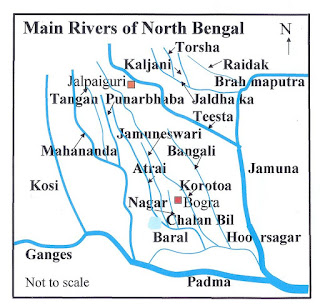
 Rennel's map (Bangalir Itihas
Rennel's map (Bangalir Itihas
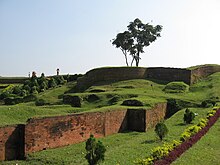











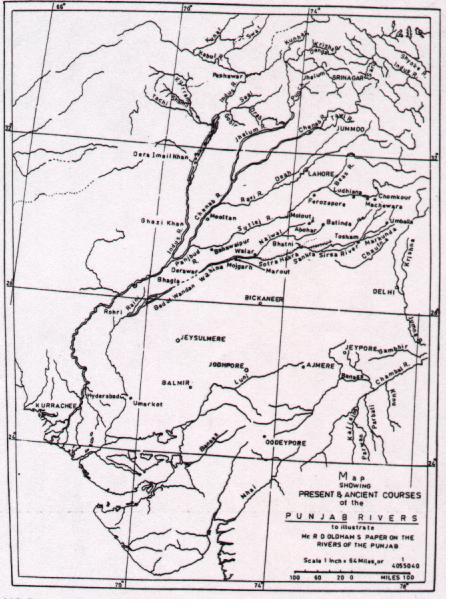
















 Santali glosses.
Santali glosses. Daimabad seal.
Daimabad seal. 






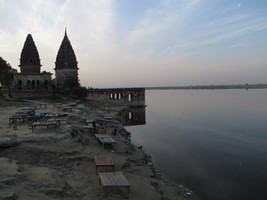
.jpg)



















 [quote]
[quote] 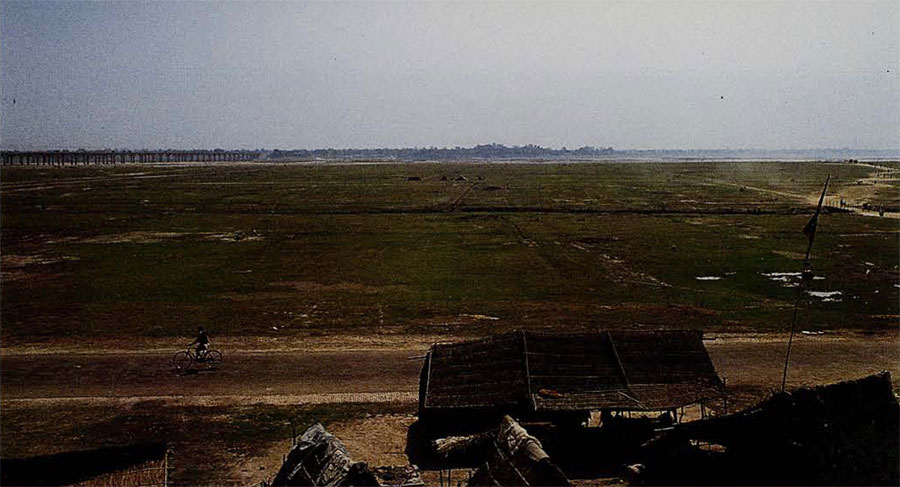
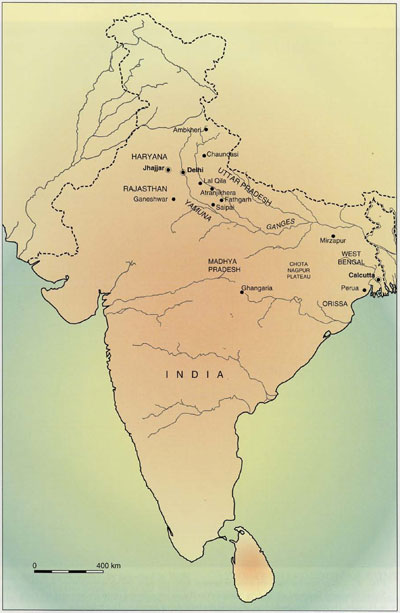



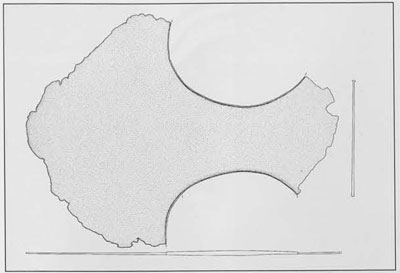
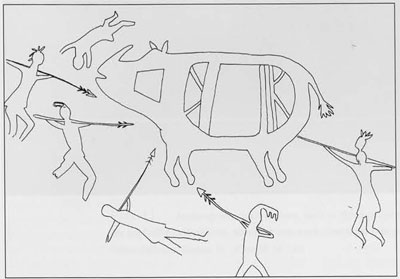
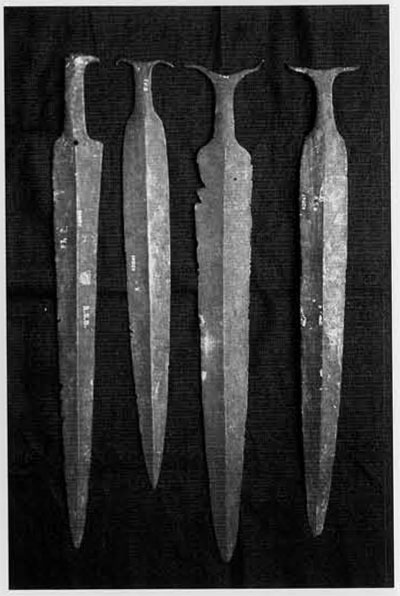
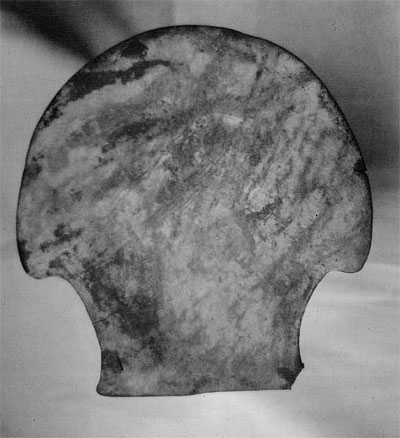
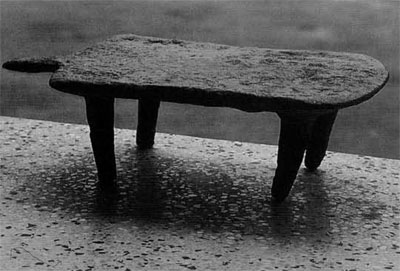
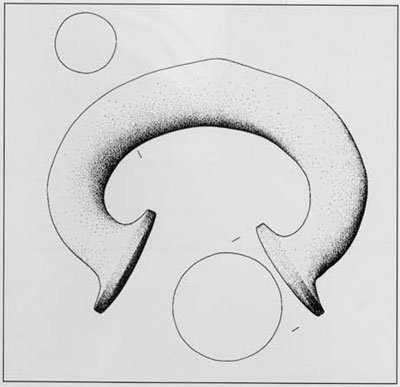
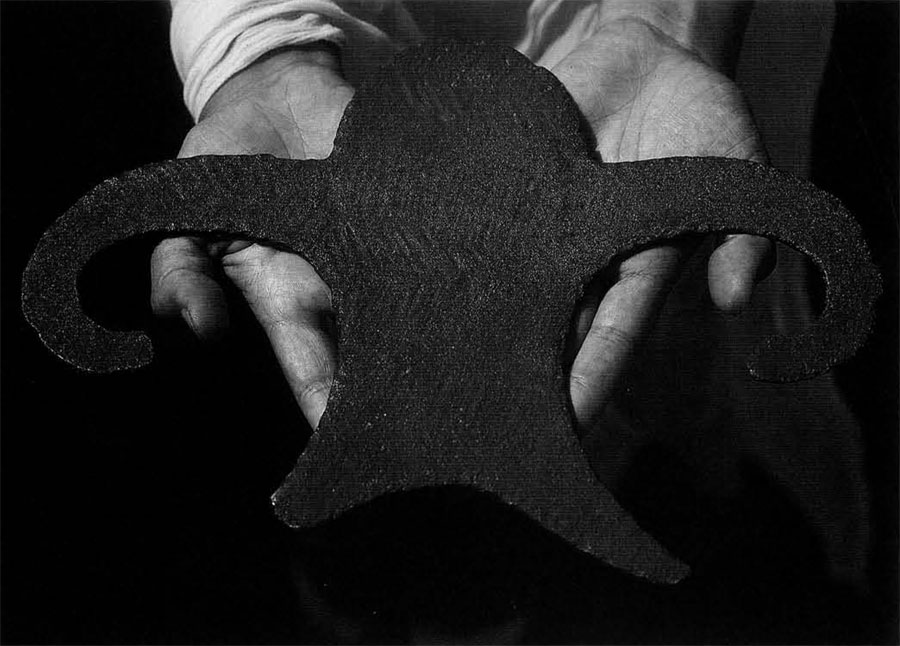
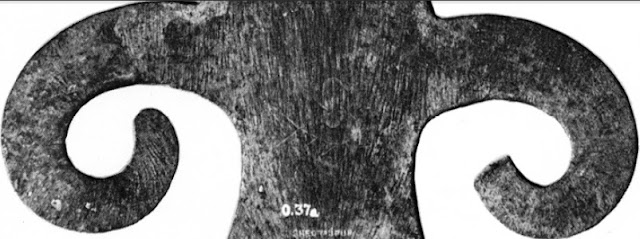
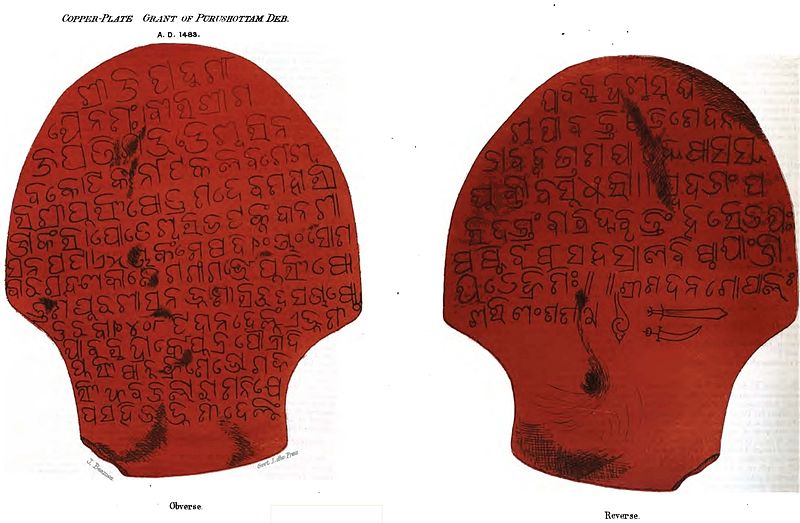






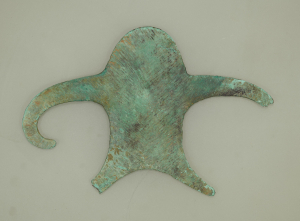 Seated position of anthropomorph, Signifies kamaḍha 'penance' rebus: kammaṭa 'mint, coiner, coinage'.
Seated position of anthropomorph, Signifies kamaḍha 'penance' rebus: kammaṭa 'mint, coiner, coinage'.





















































































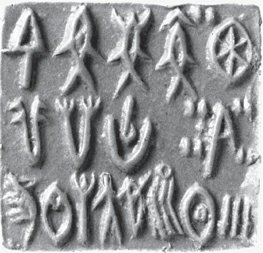 m0314 Seal impression, Text 1400 Dimension: 1.4 sq. in. (3.6 cm)
m0314 Seal impression, Text 1400 Dimension: 1.4 sq. in. (3.6 cm) 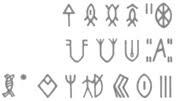 The last sign is wrongly identified in Mahadevan concordance. This hieroglyph is
The last sign is wrongly identified in Mahadevan concordance. This hieroglyph is  eraka 'nave of wheel' rebus: eraka 'moltencast, copper' PLUS sal 'splinter' rebus: sal 'workshop'. Thus, moltencast copper workshop.
eraka 'nave of wheel' rebus: eraka 'moltencast, copper' PLUS sal 'splinter' rebus: sal 'workshop'. Thus, moltencast copper workshop.
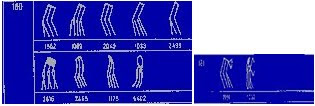










 h419
h419









 Sign 59 ayo'fish' rebus: aya'iron' ayas 'alloy metal'
Sign 59 ayo'fish' rebus: aya'iron' ayas 'alloy metal'
 Sign 65
Sign 65



















